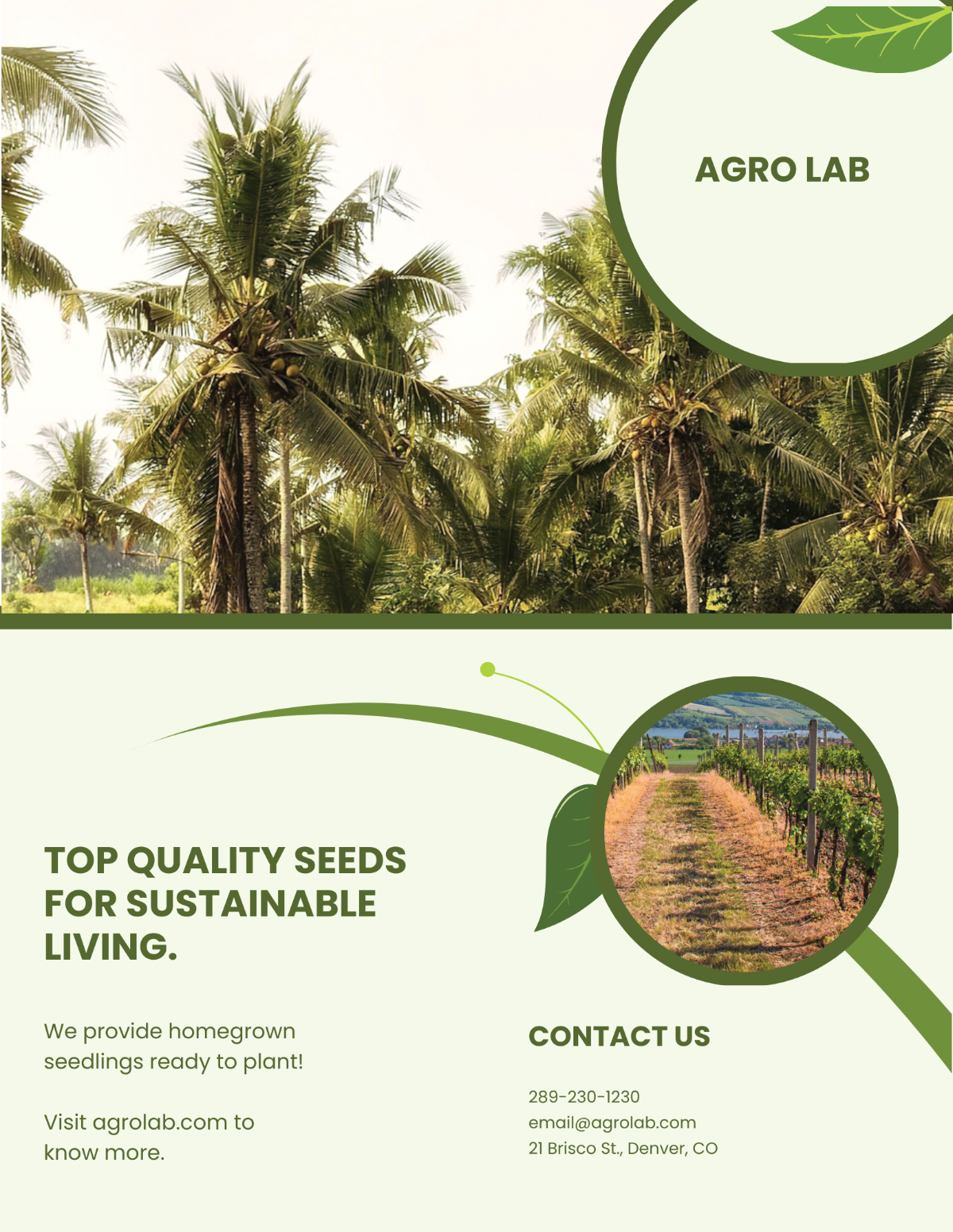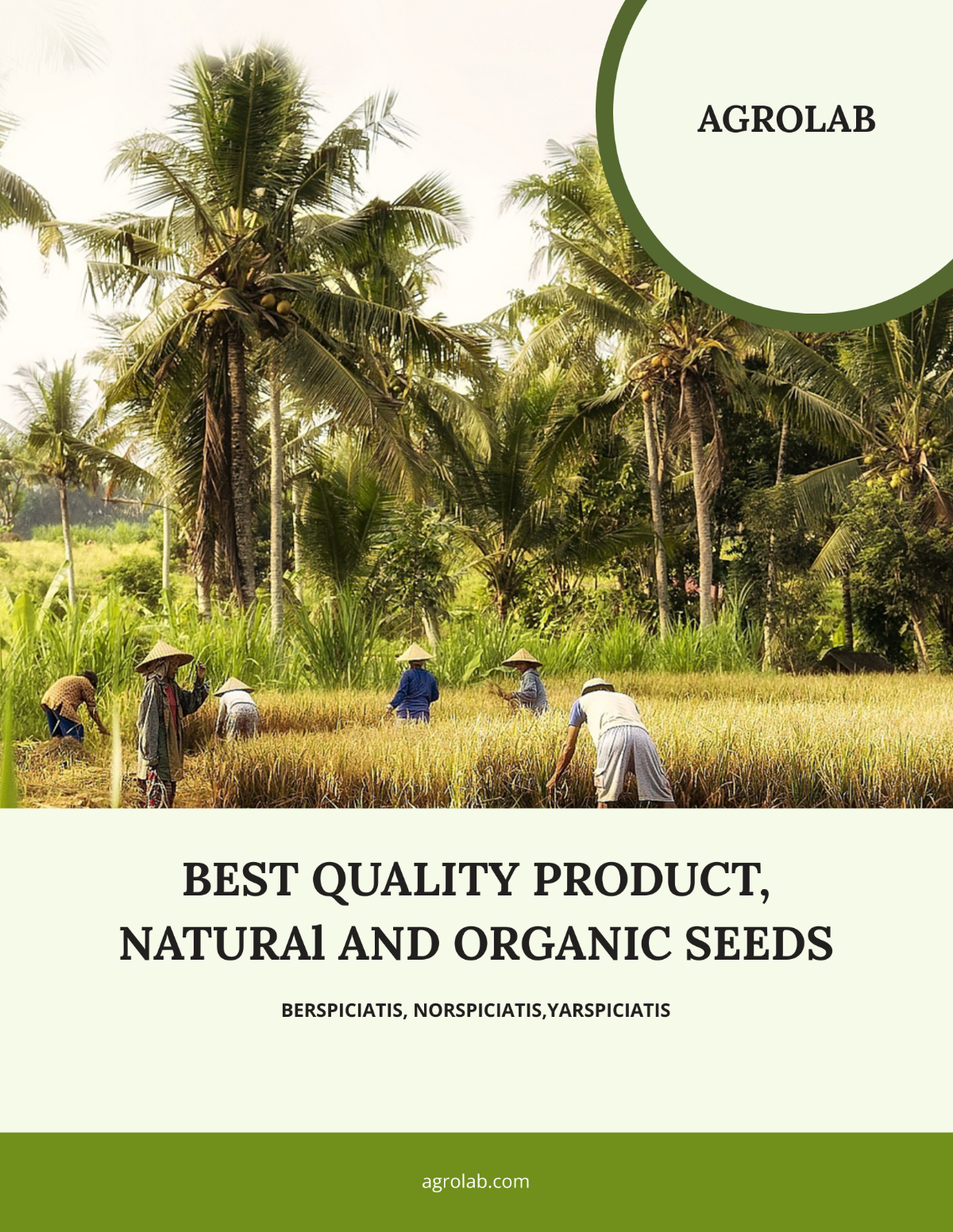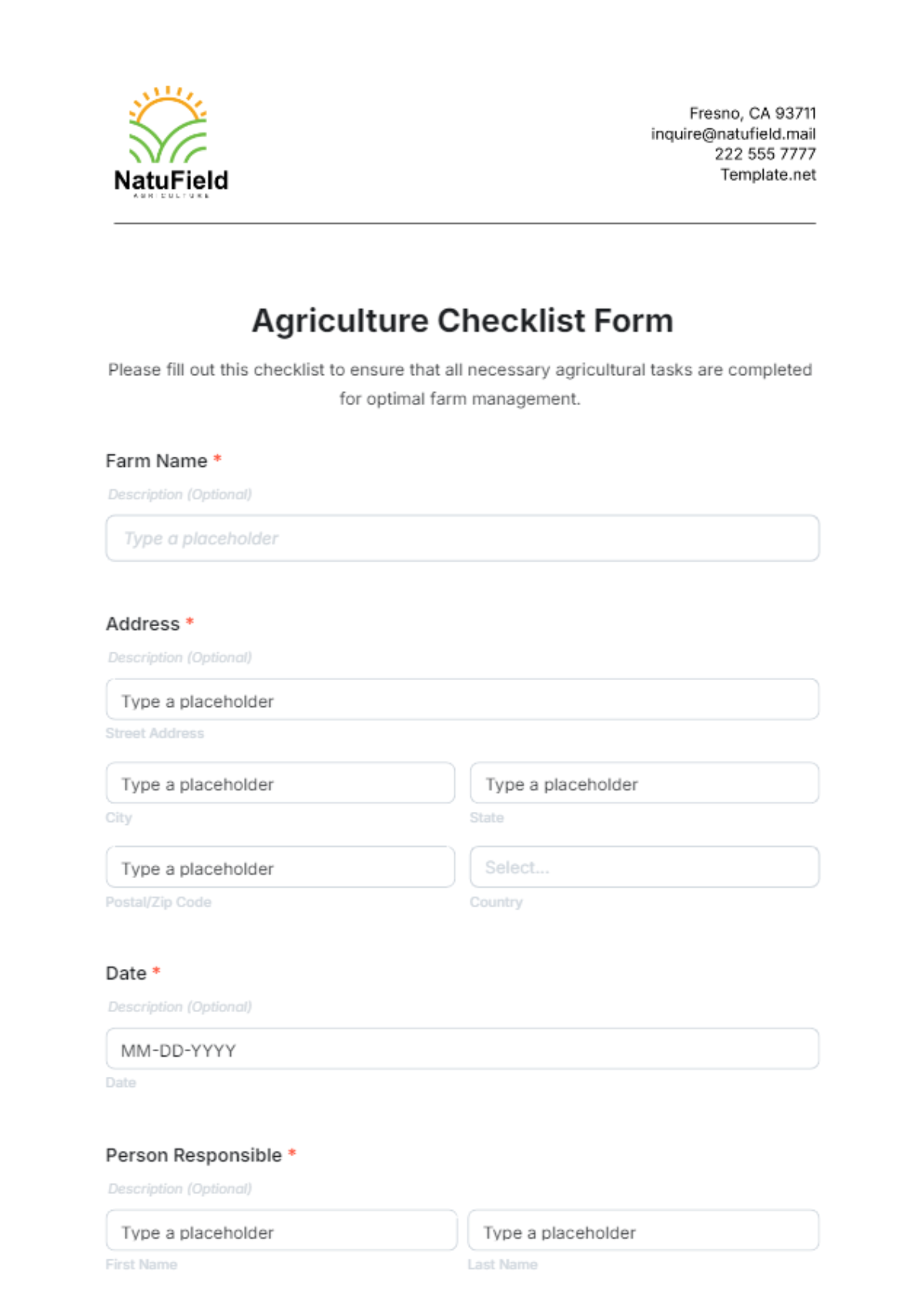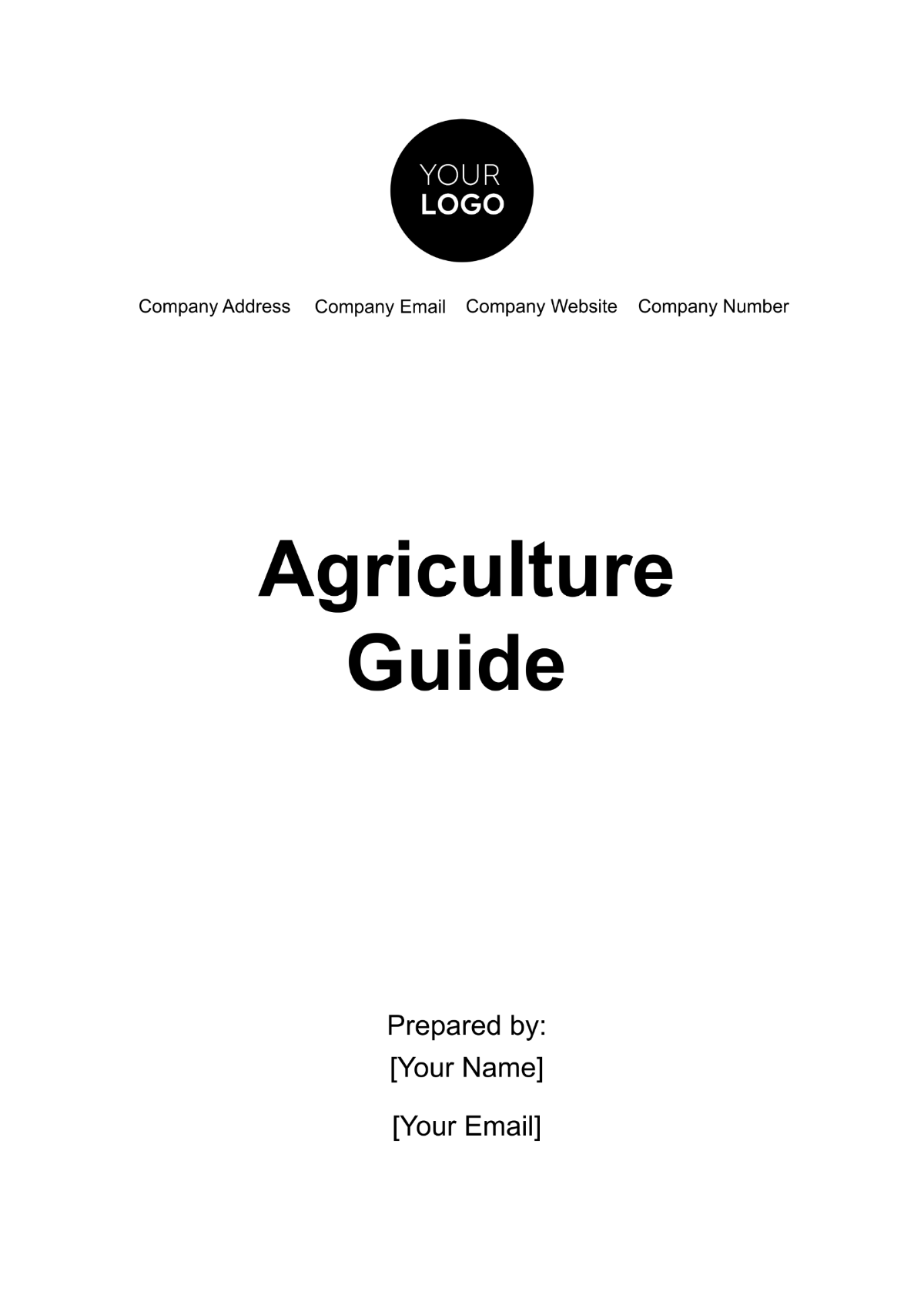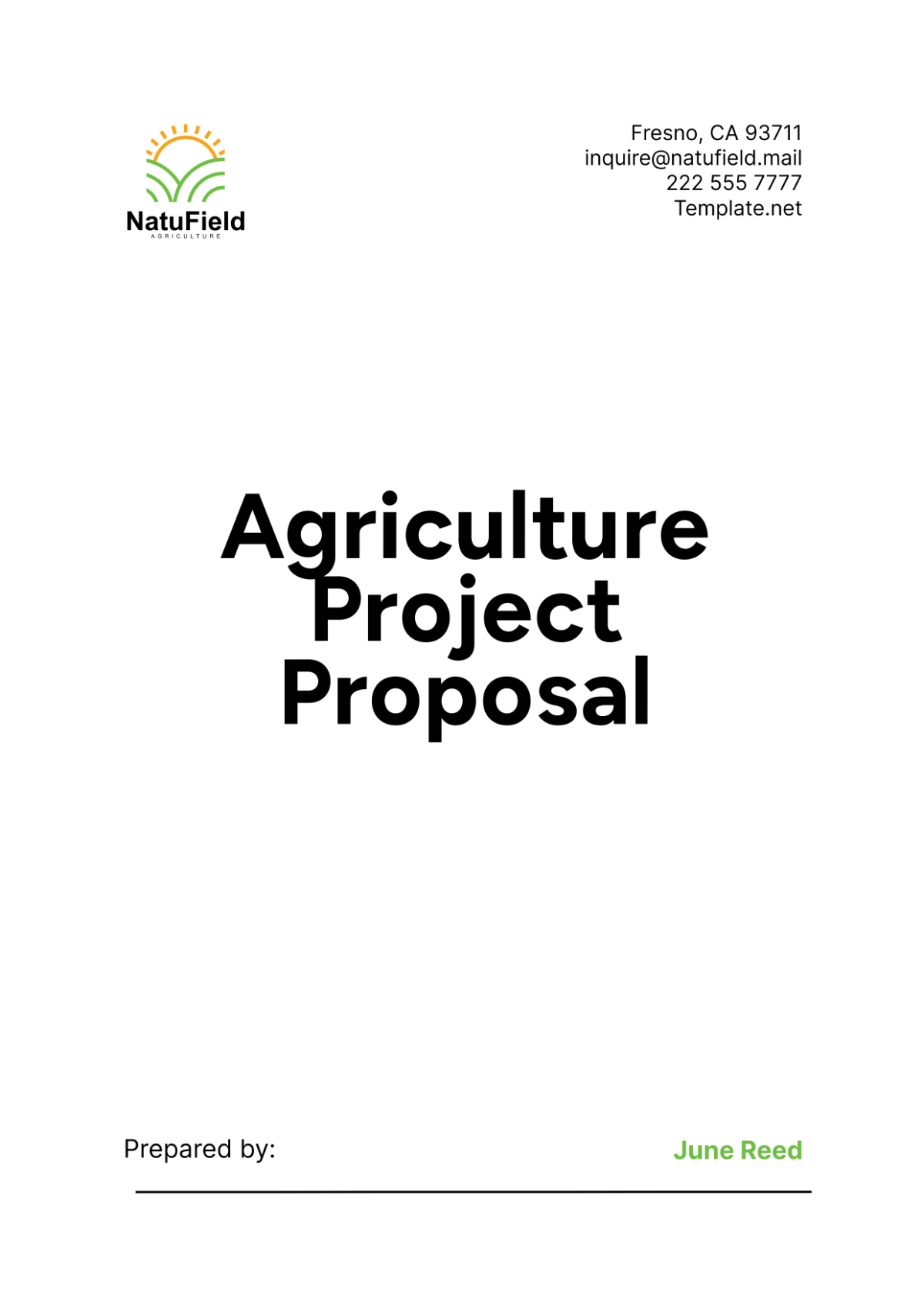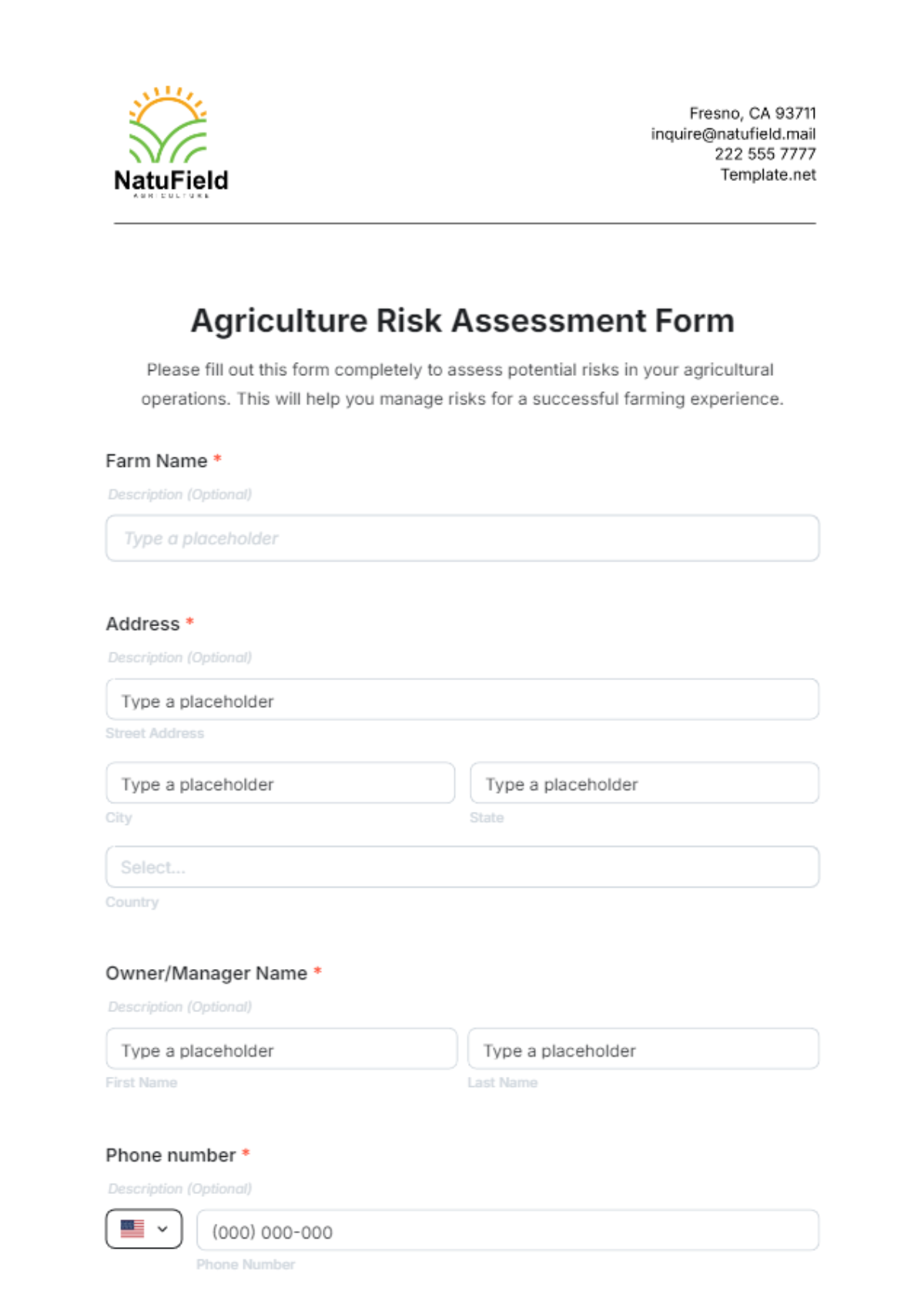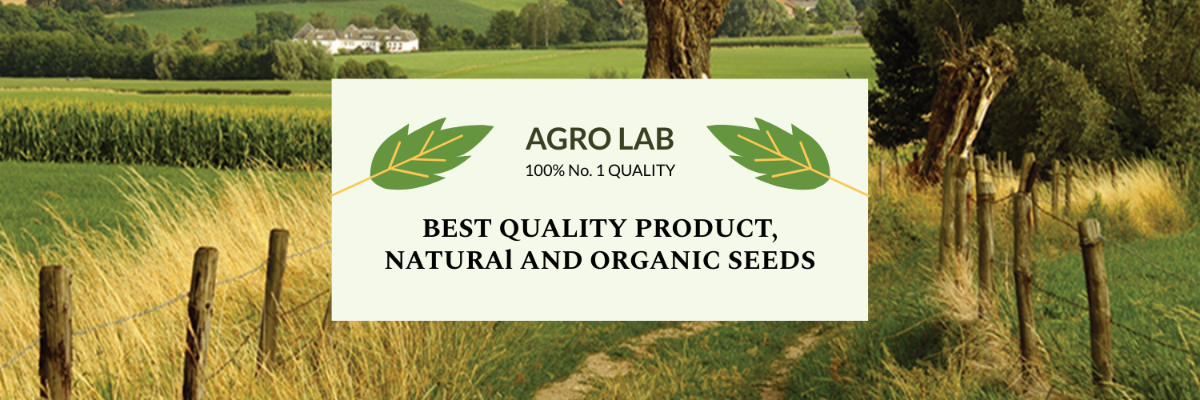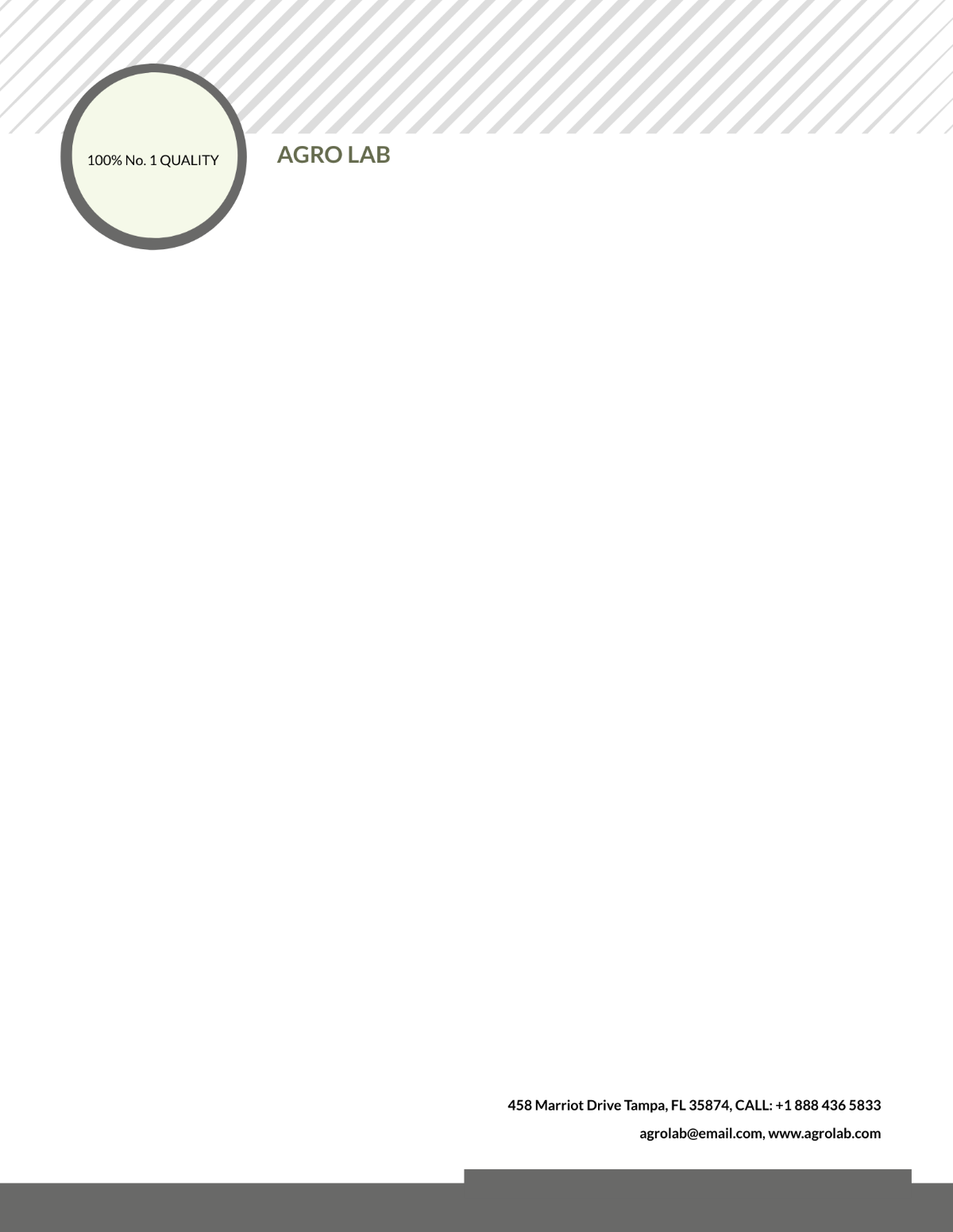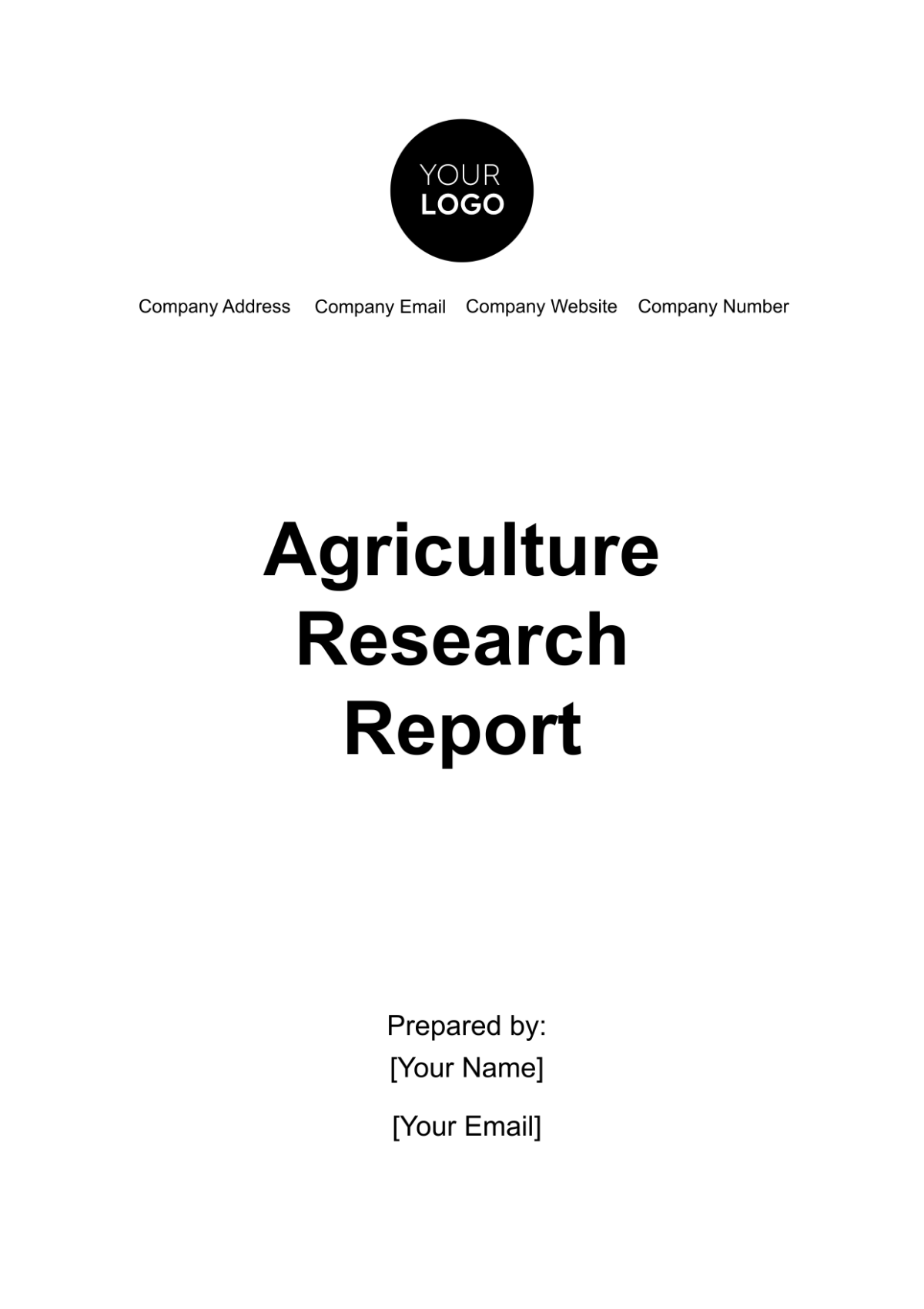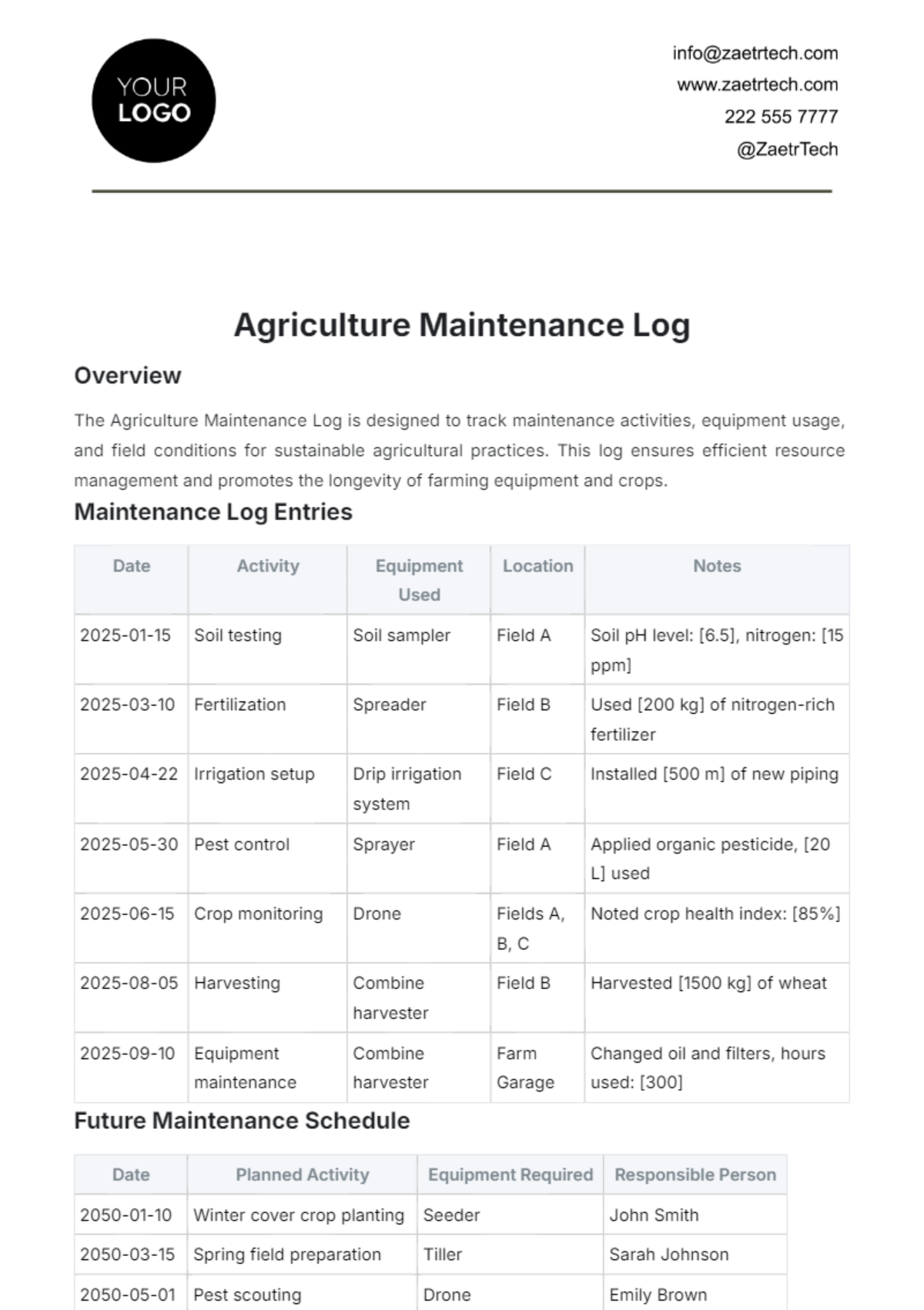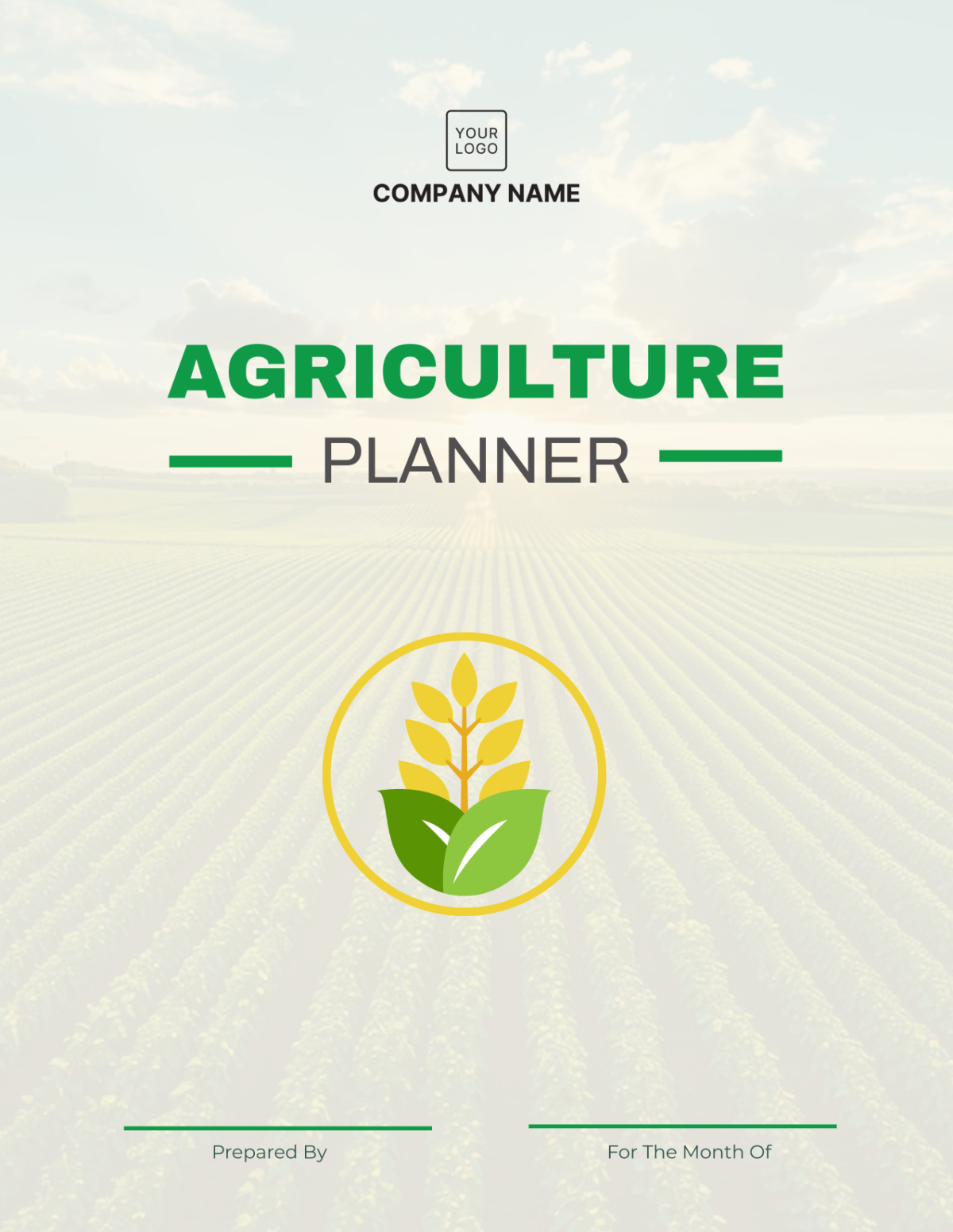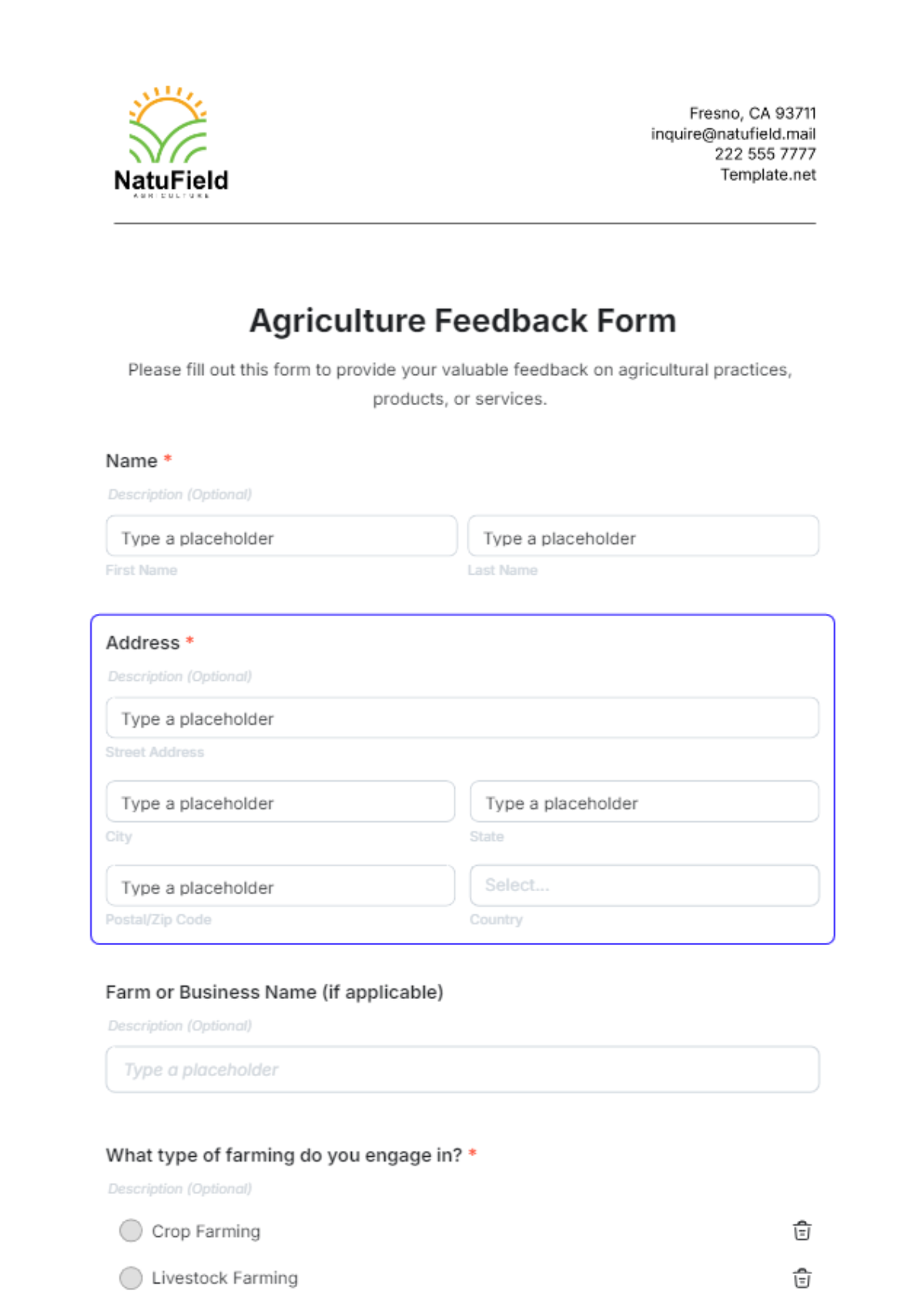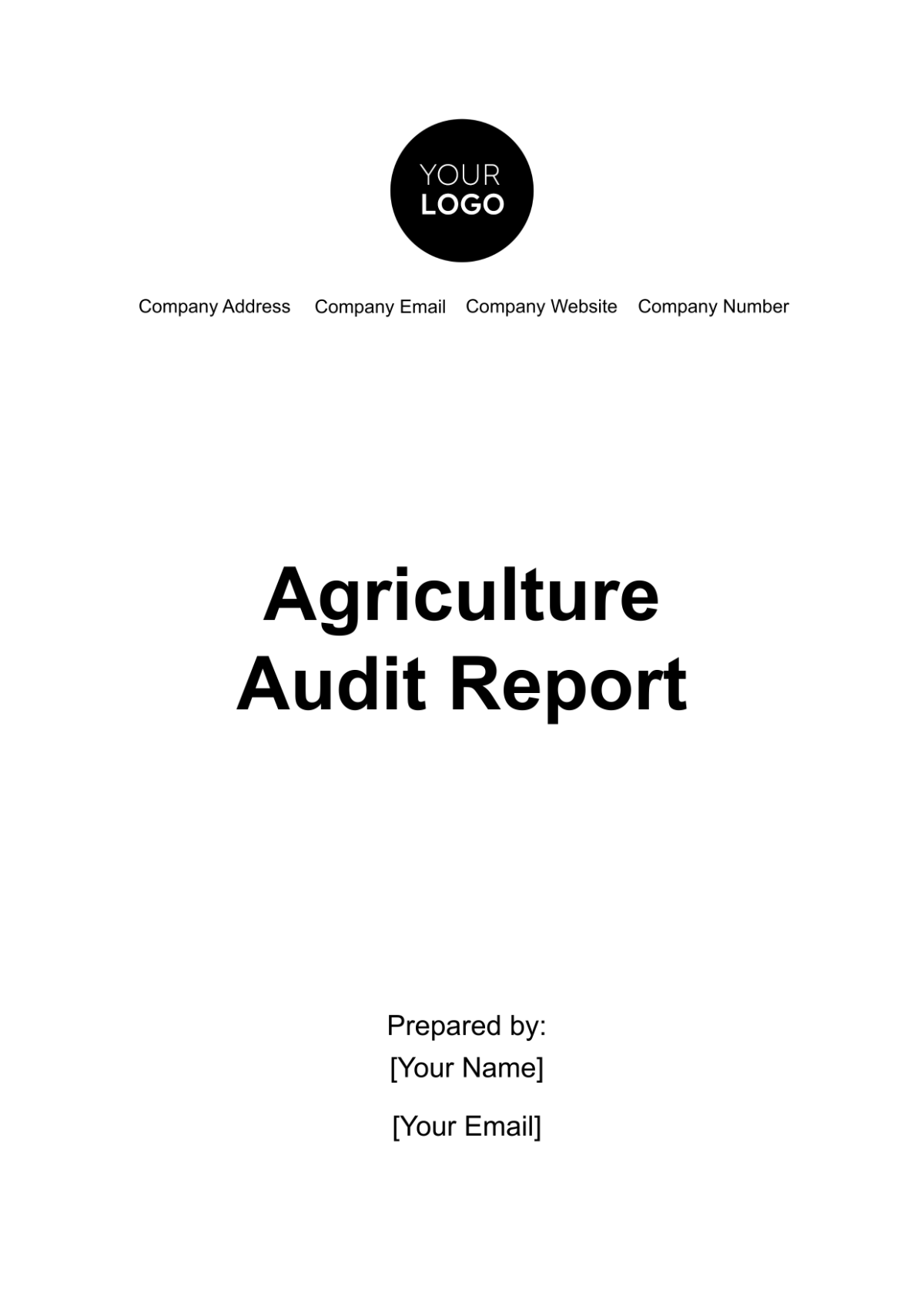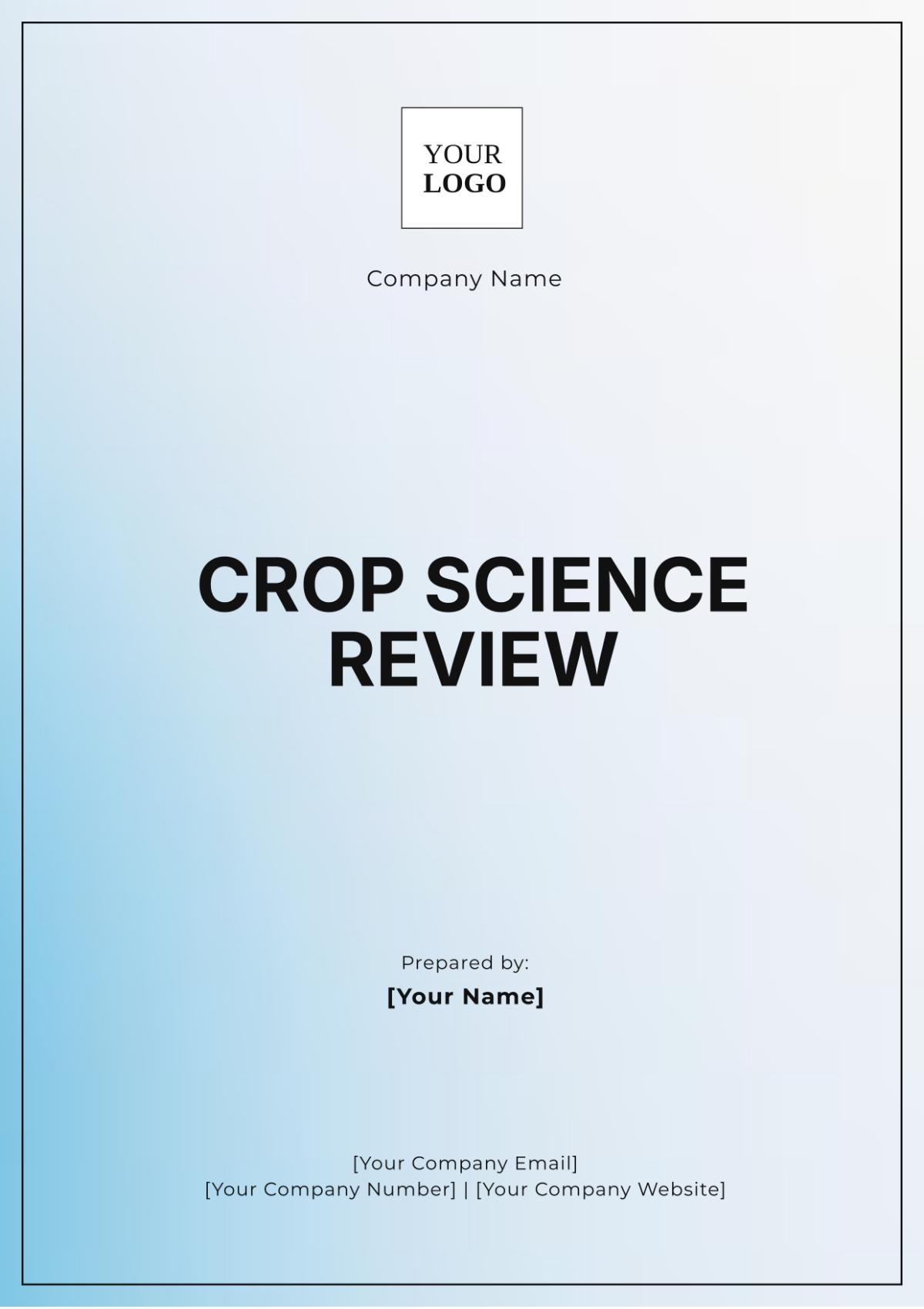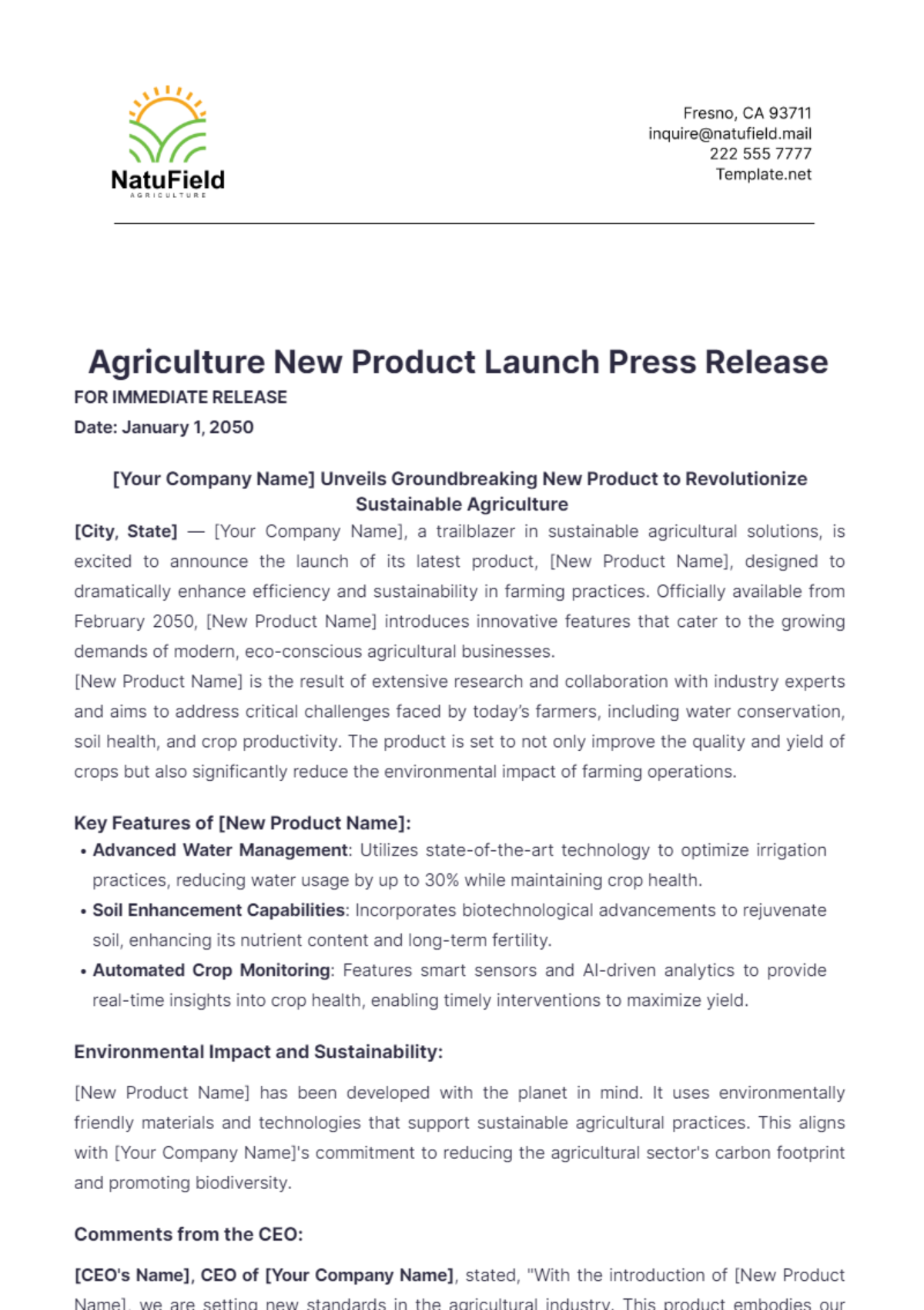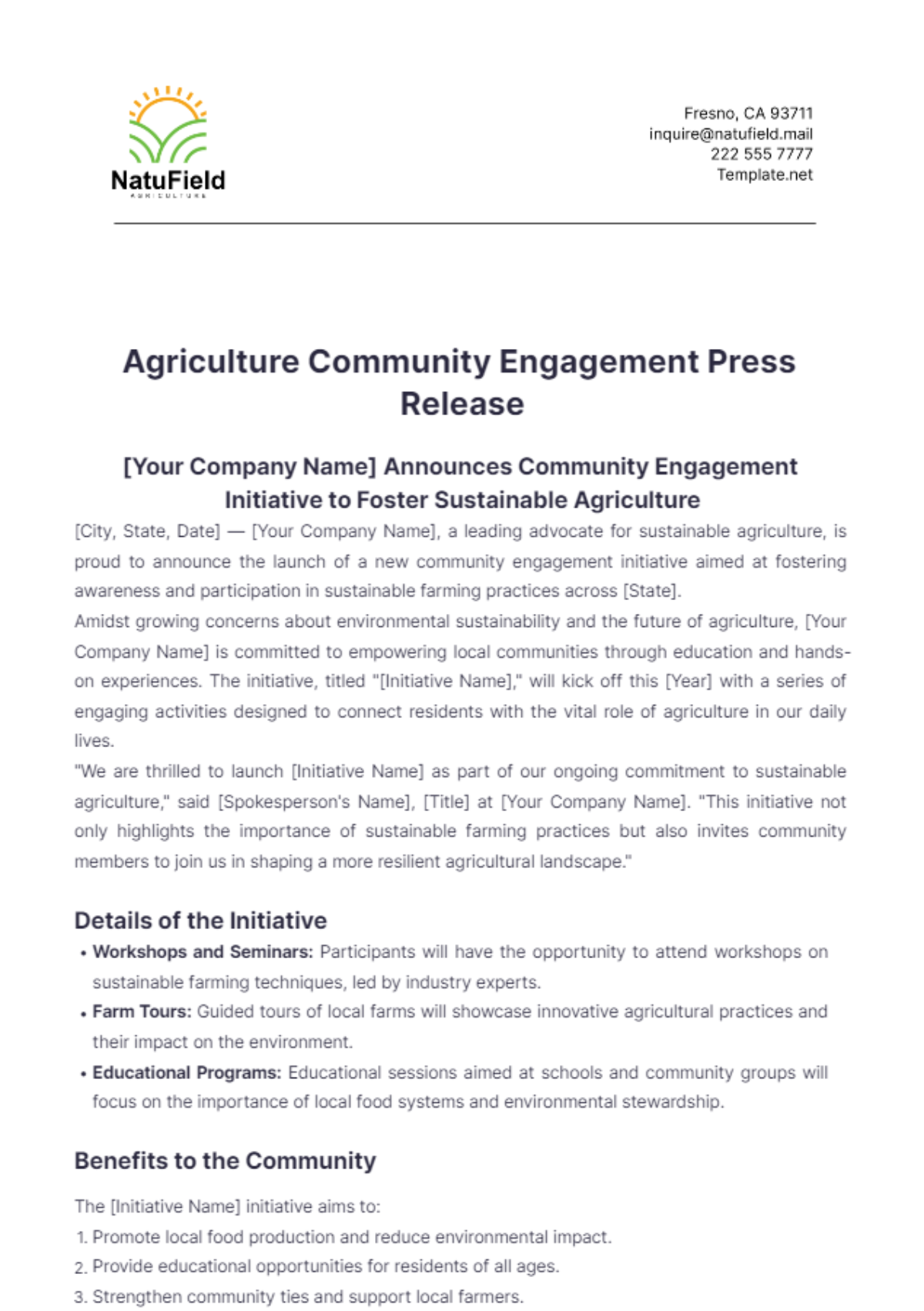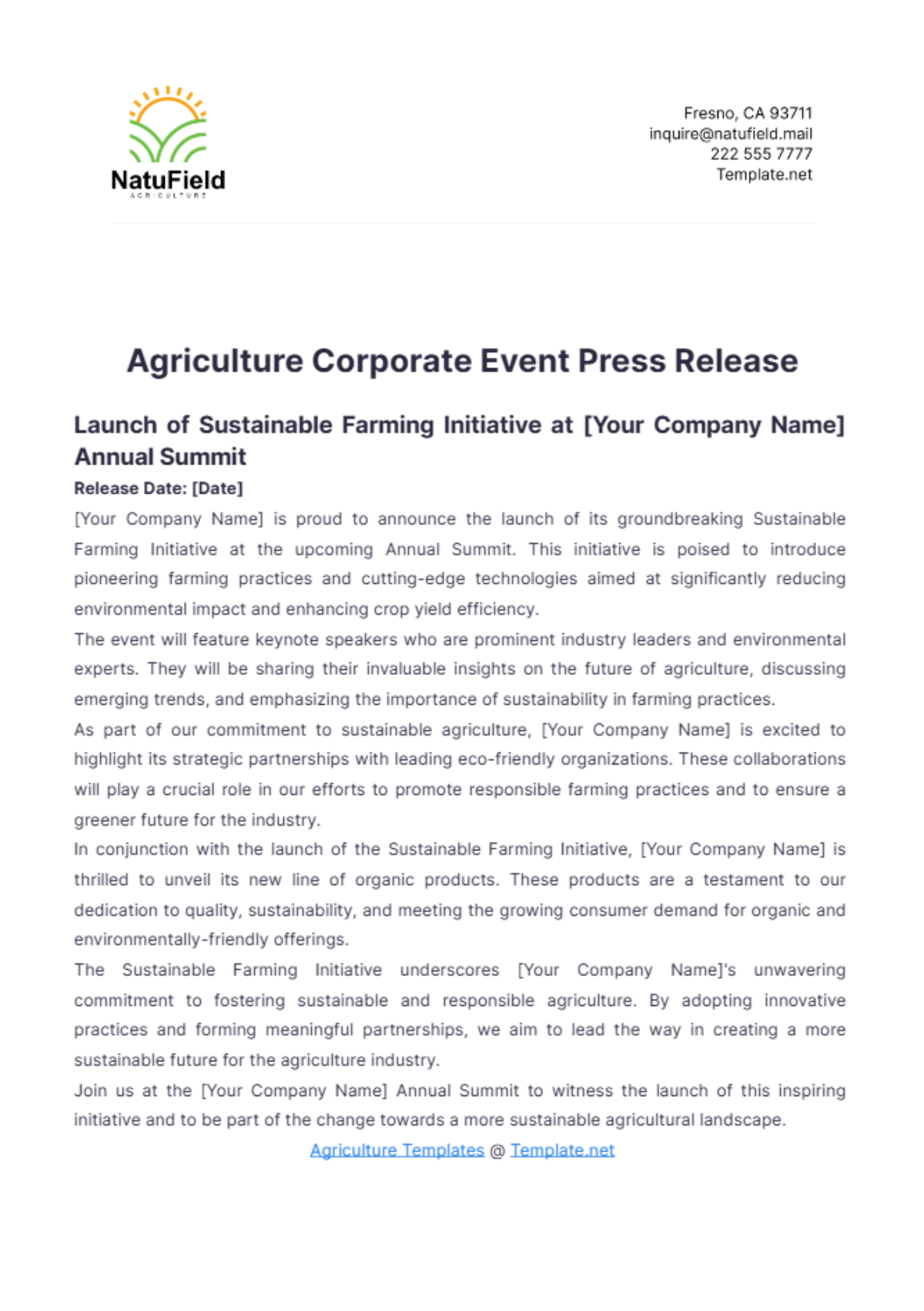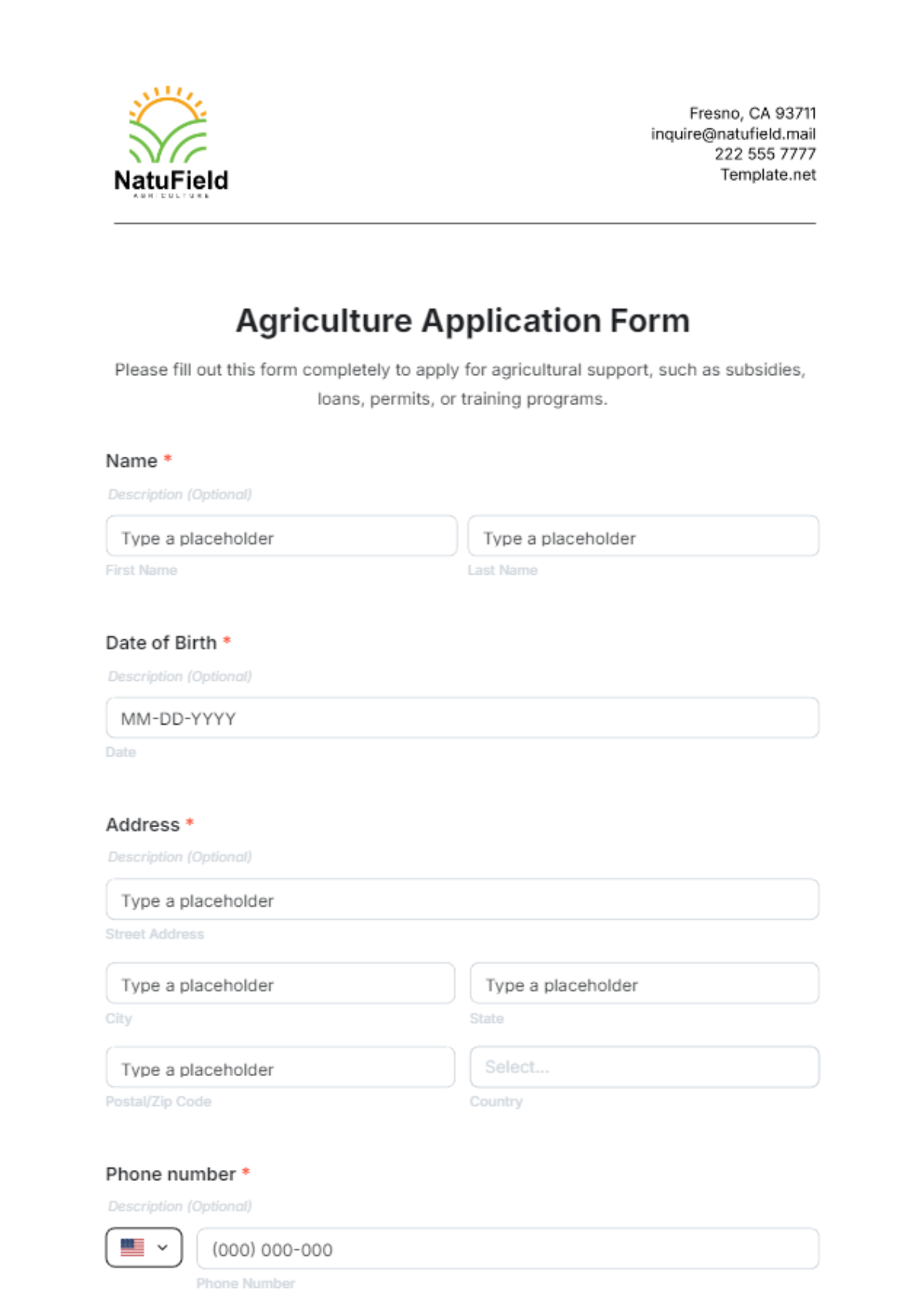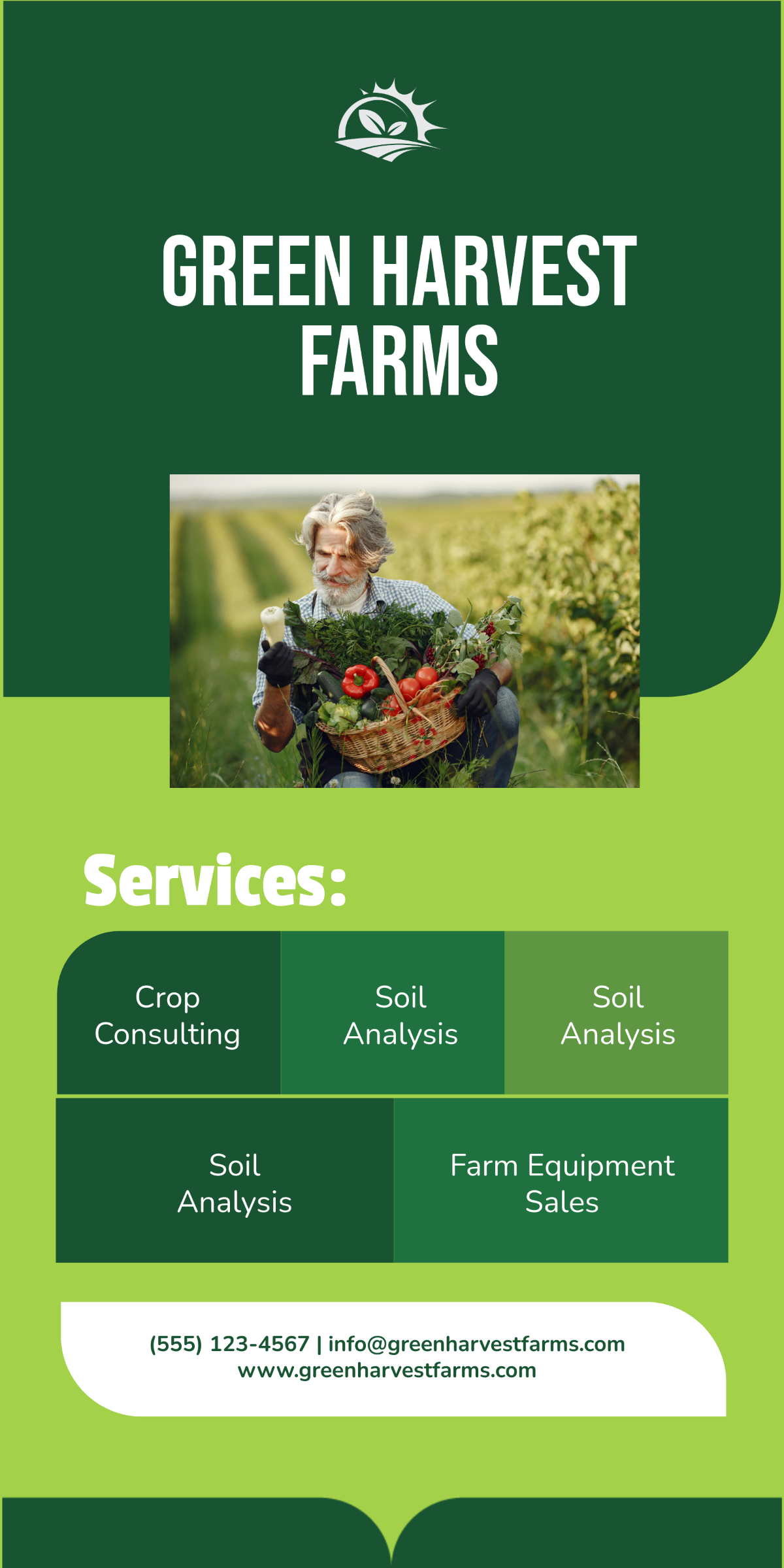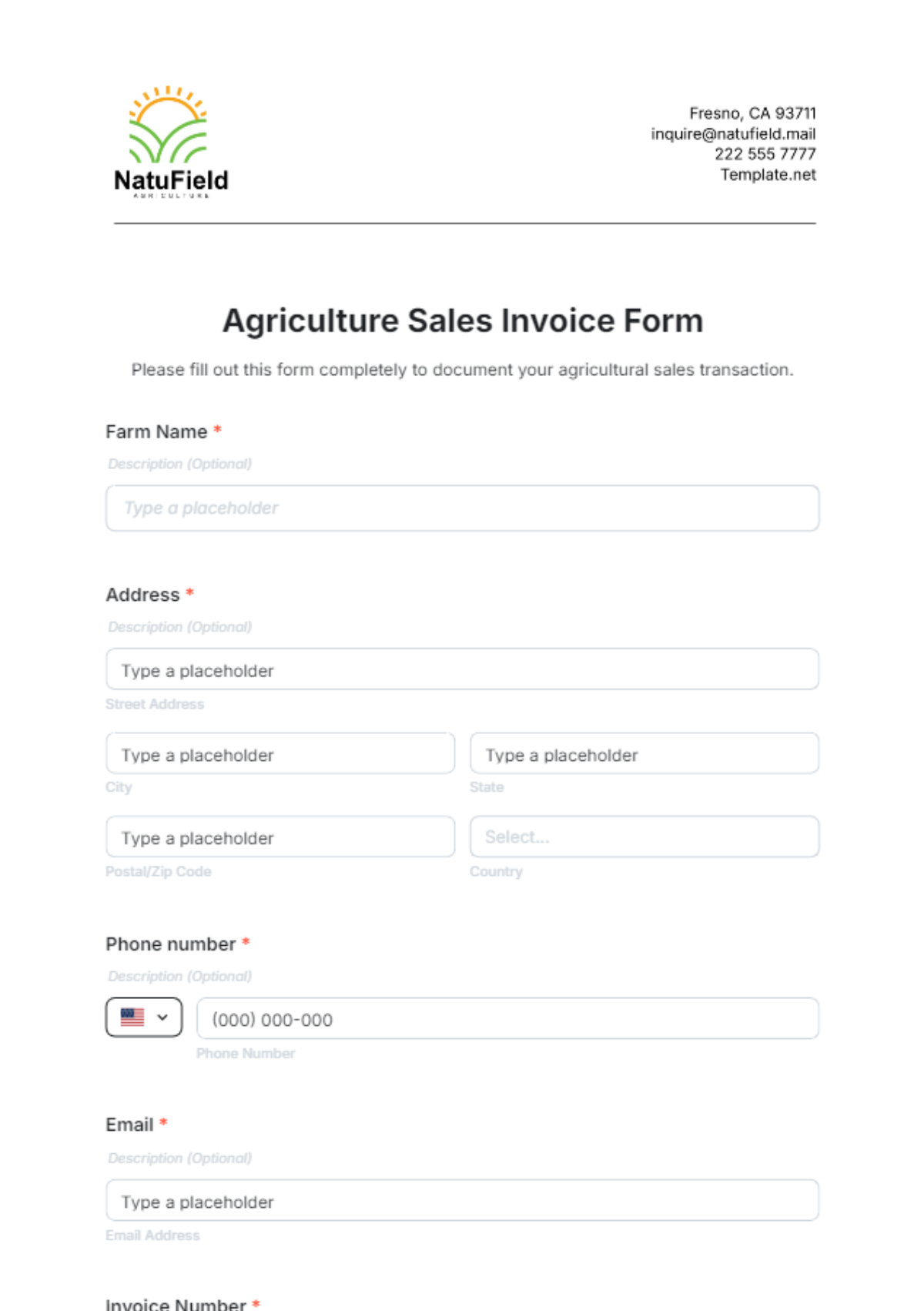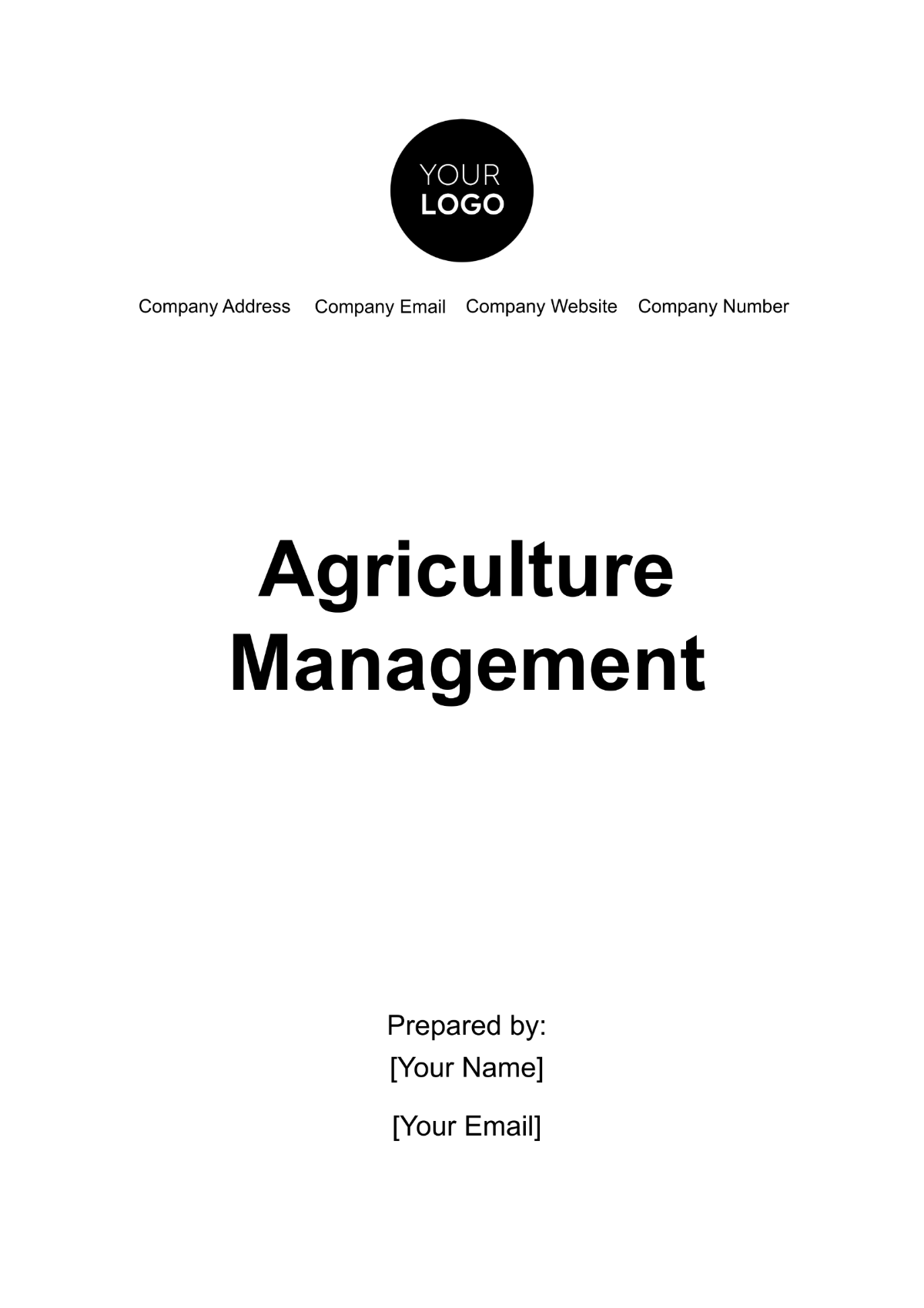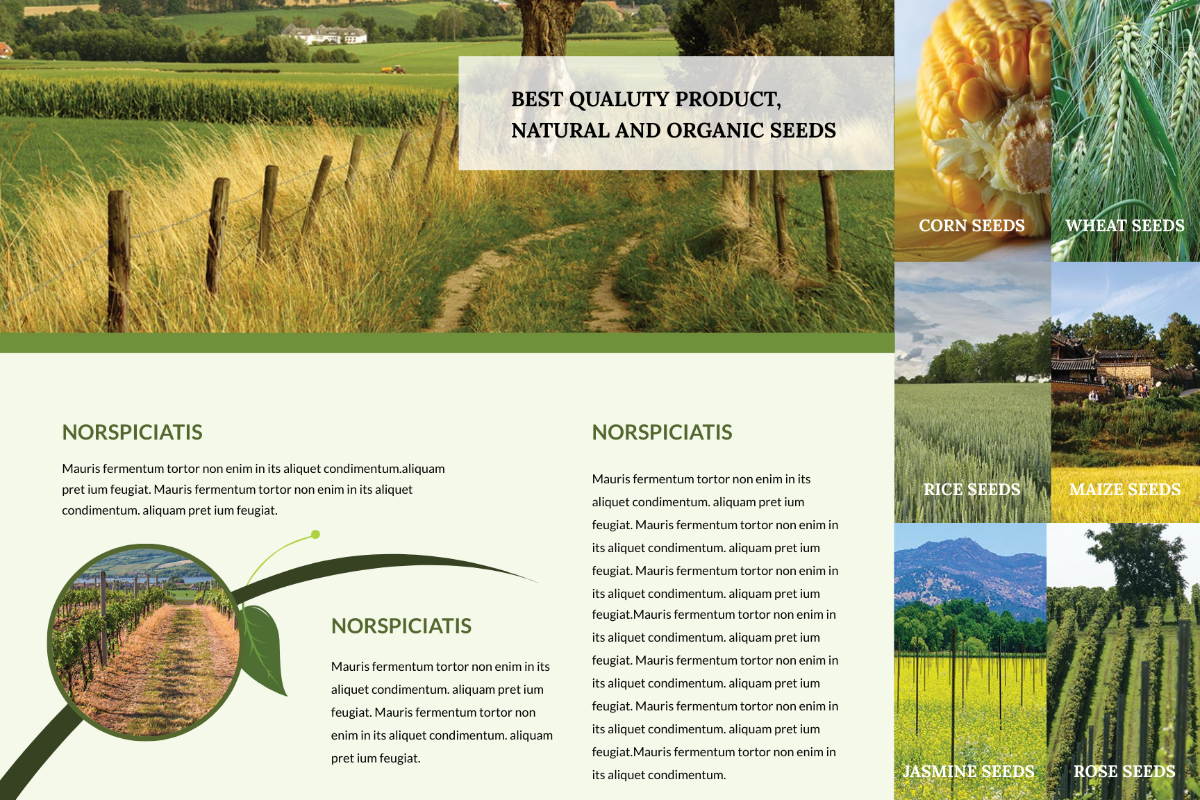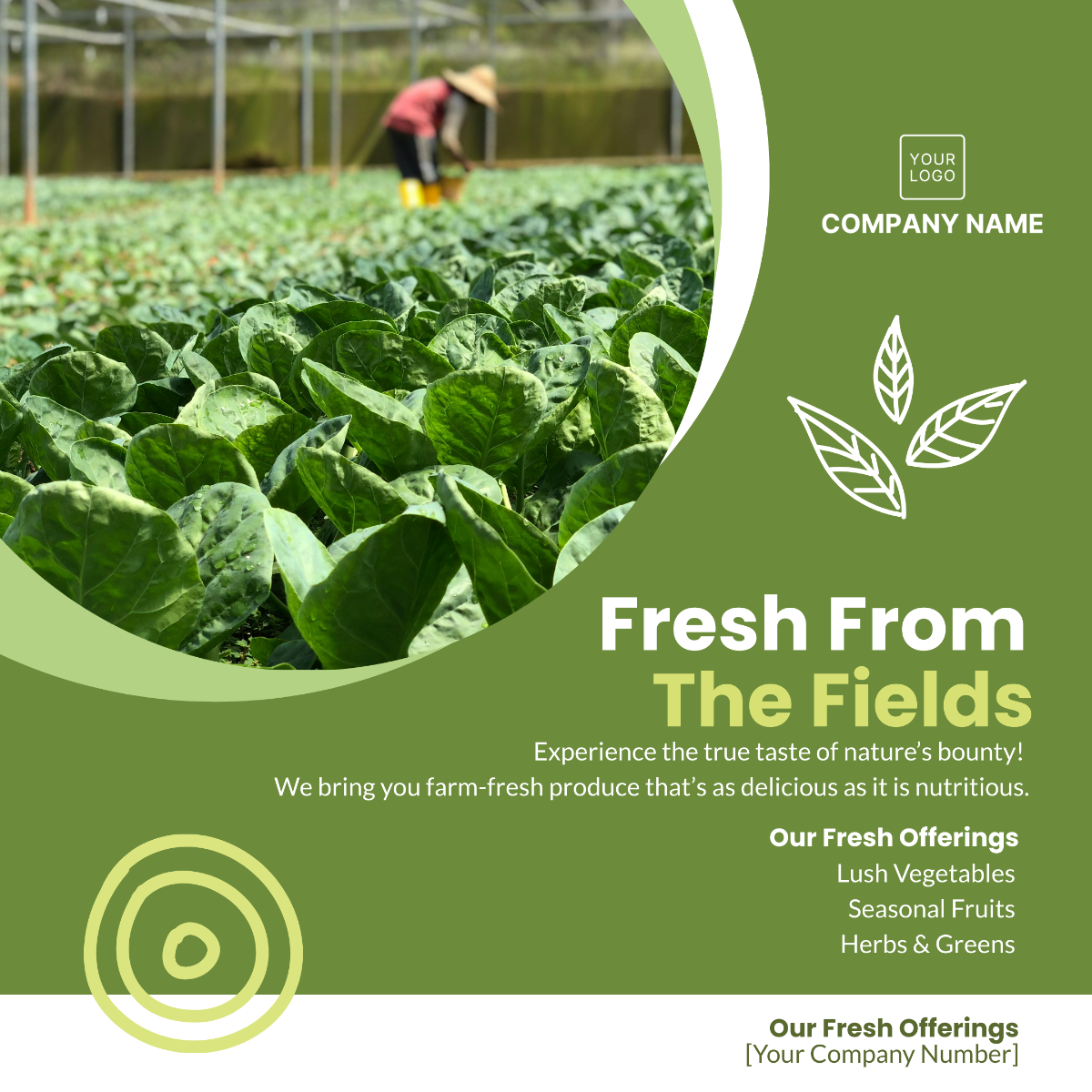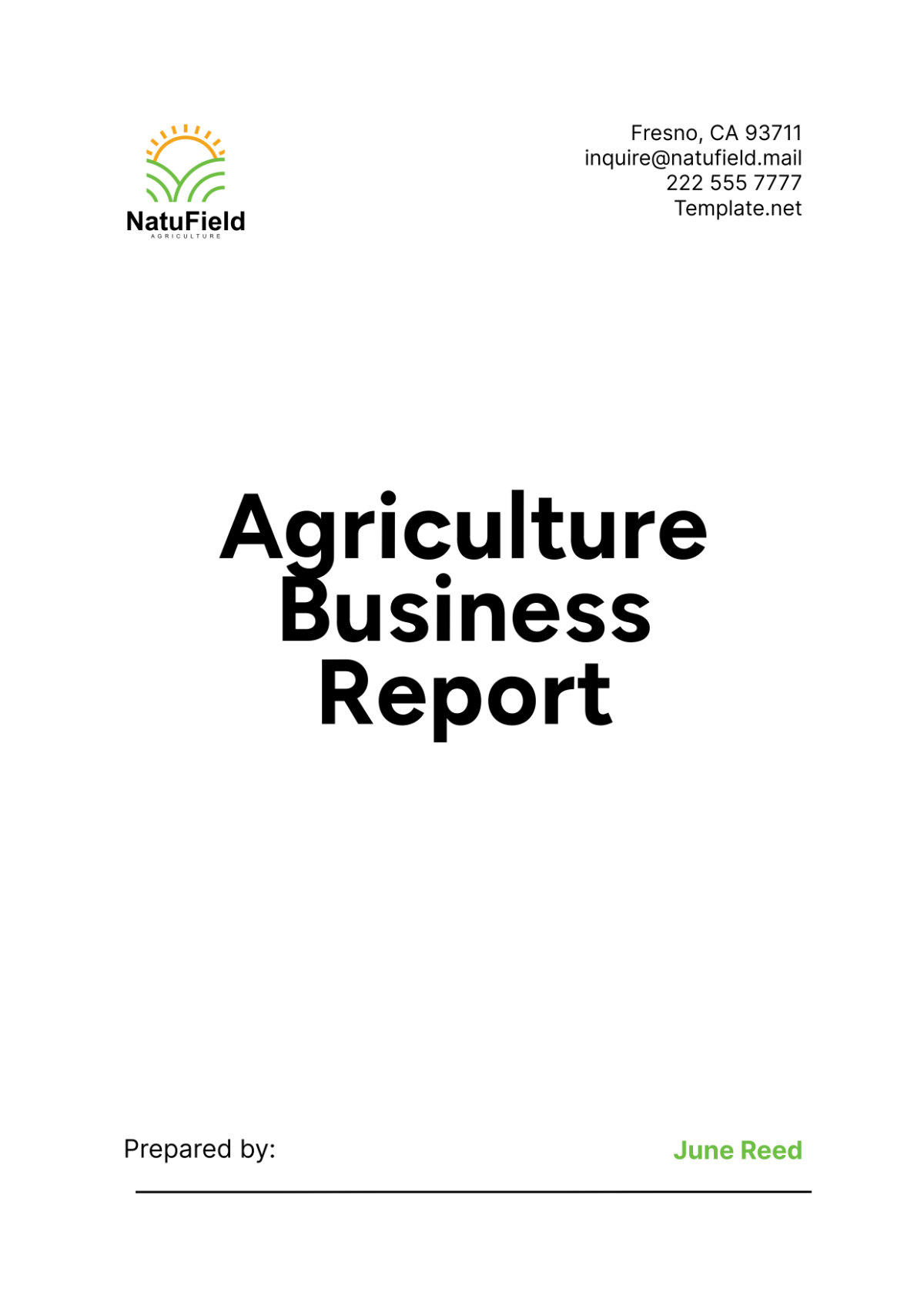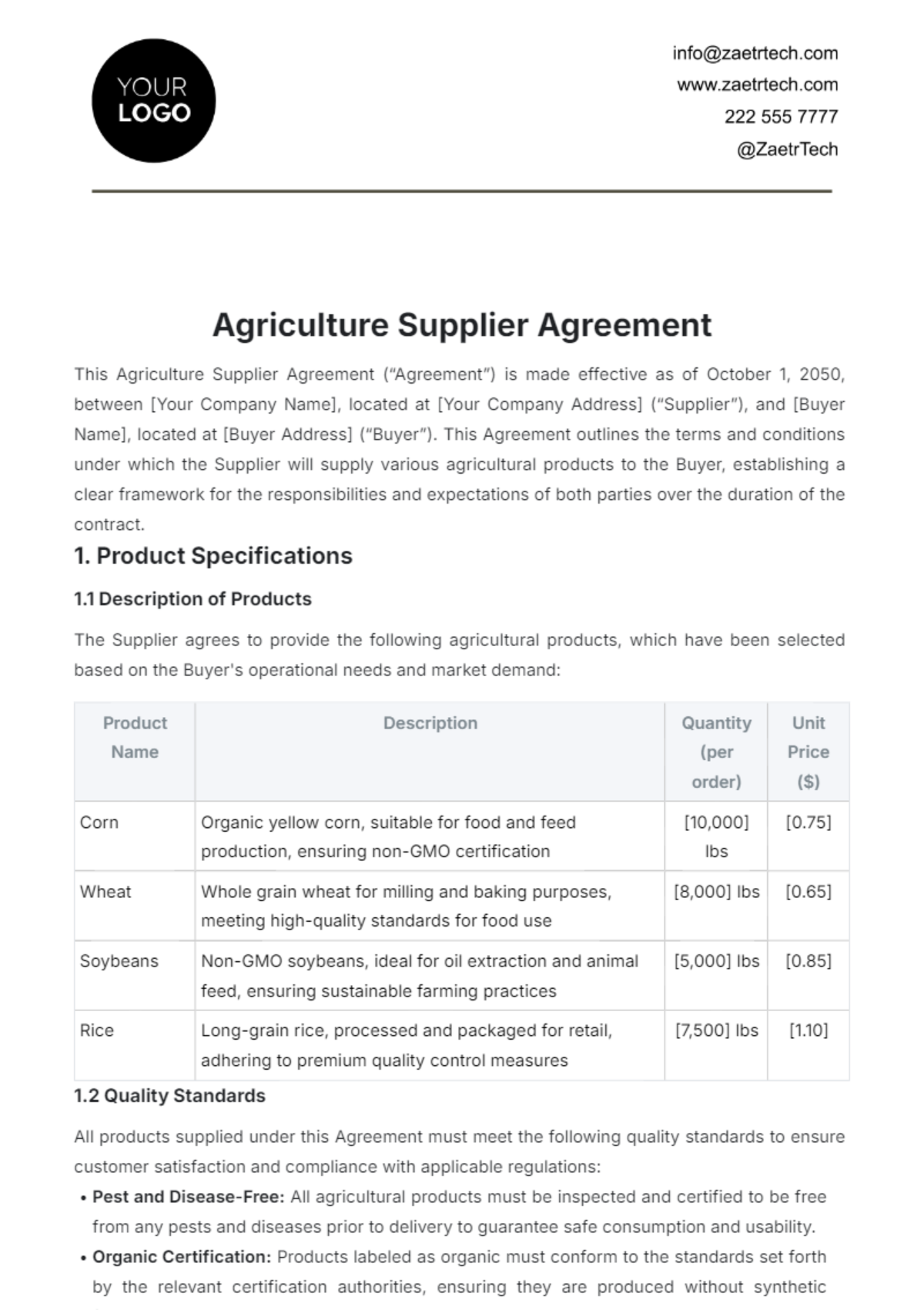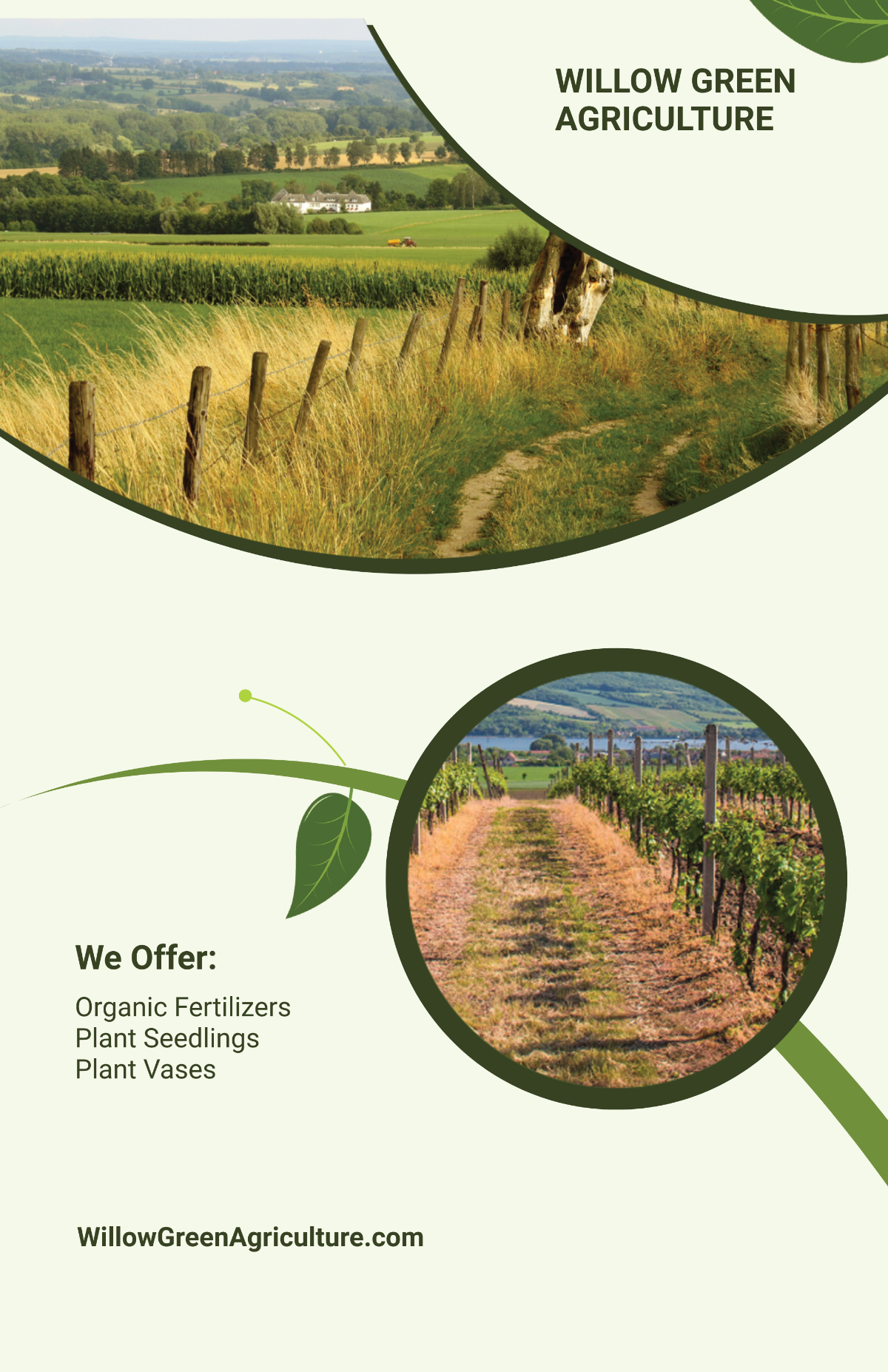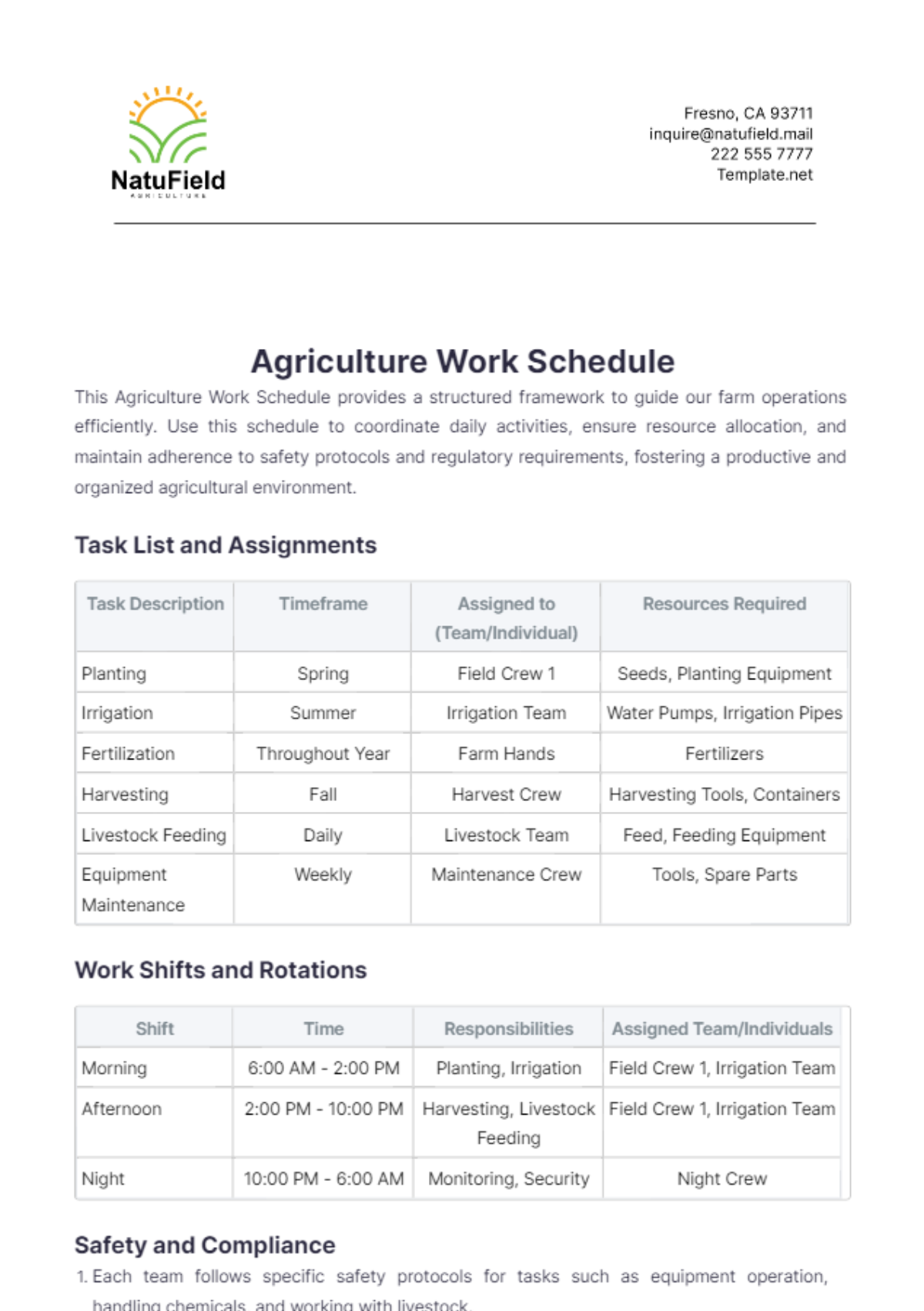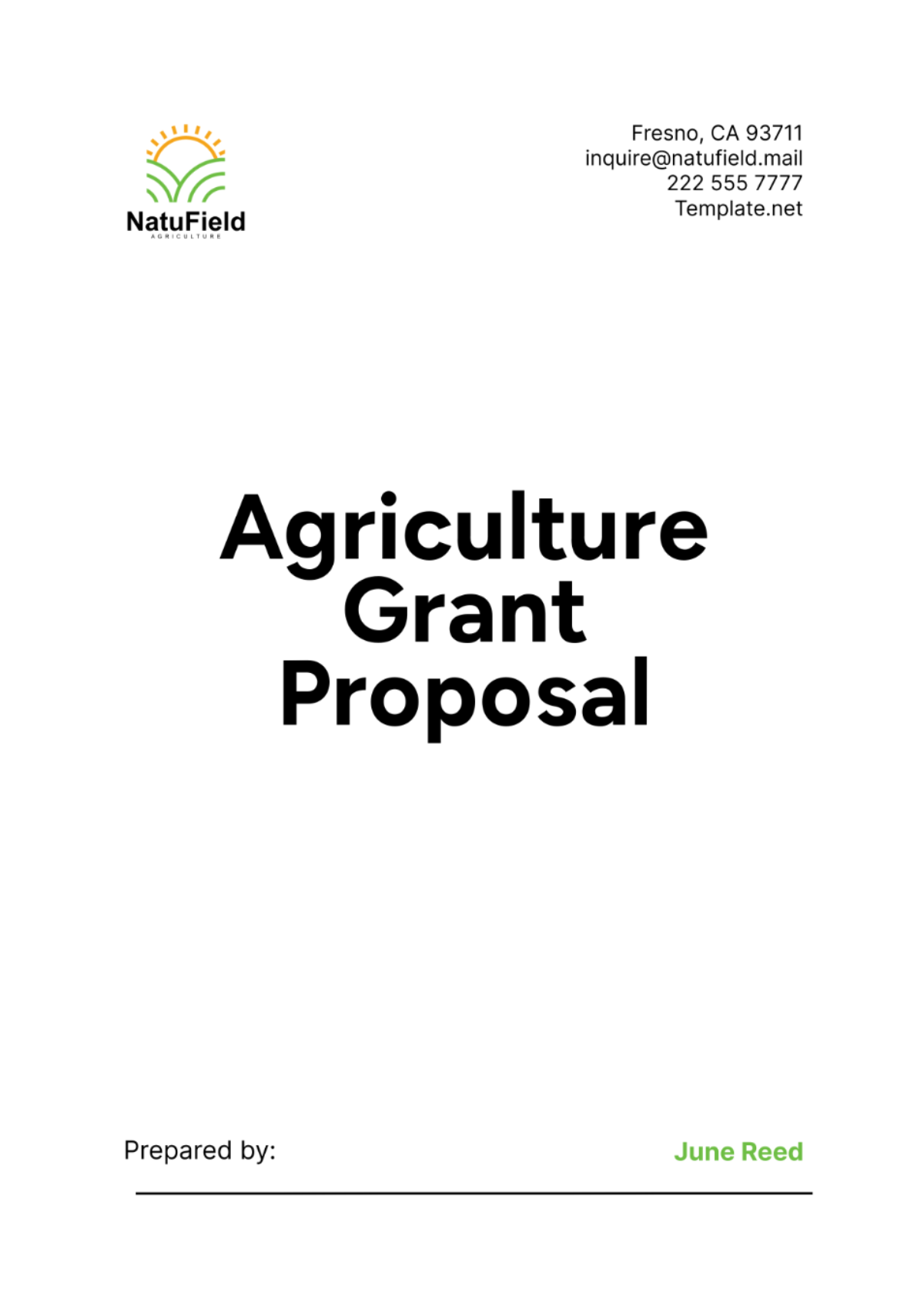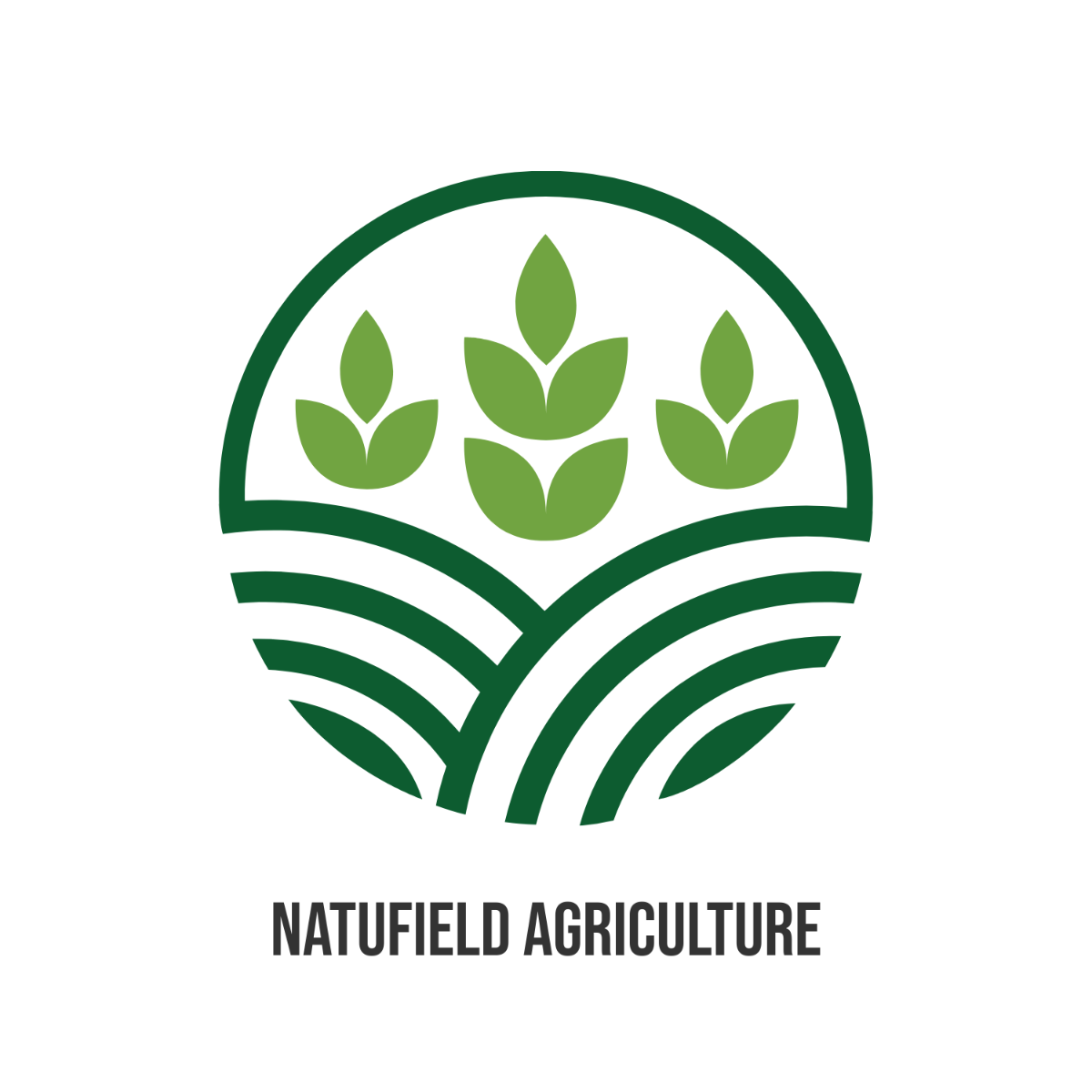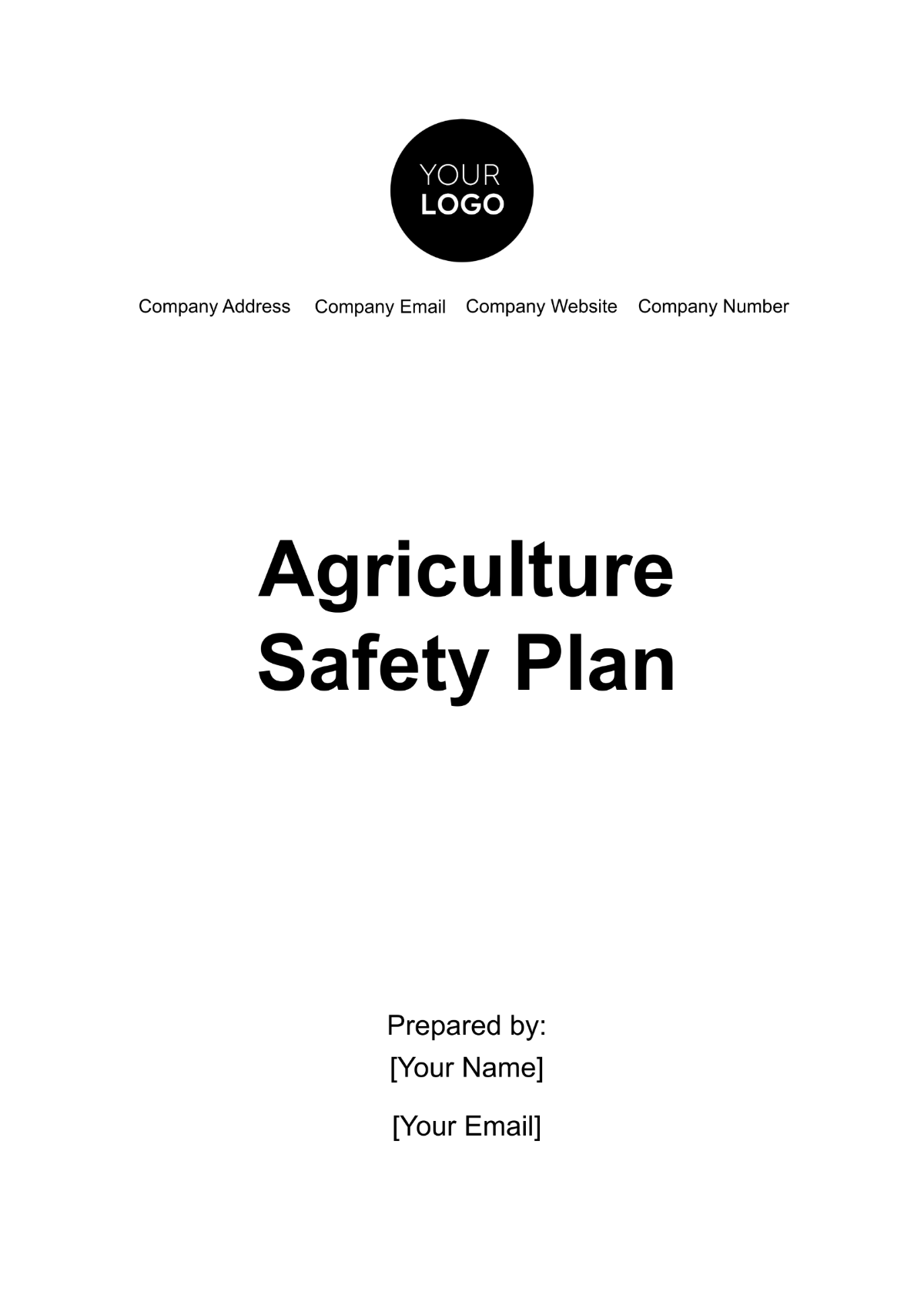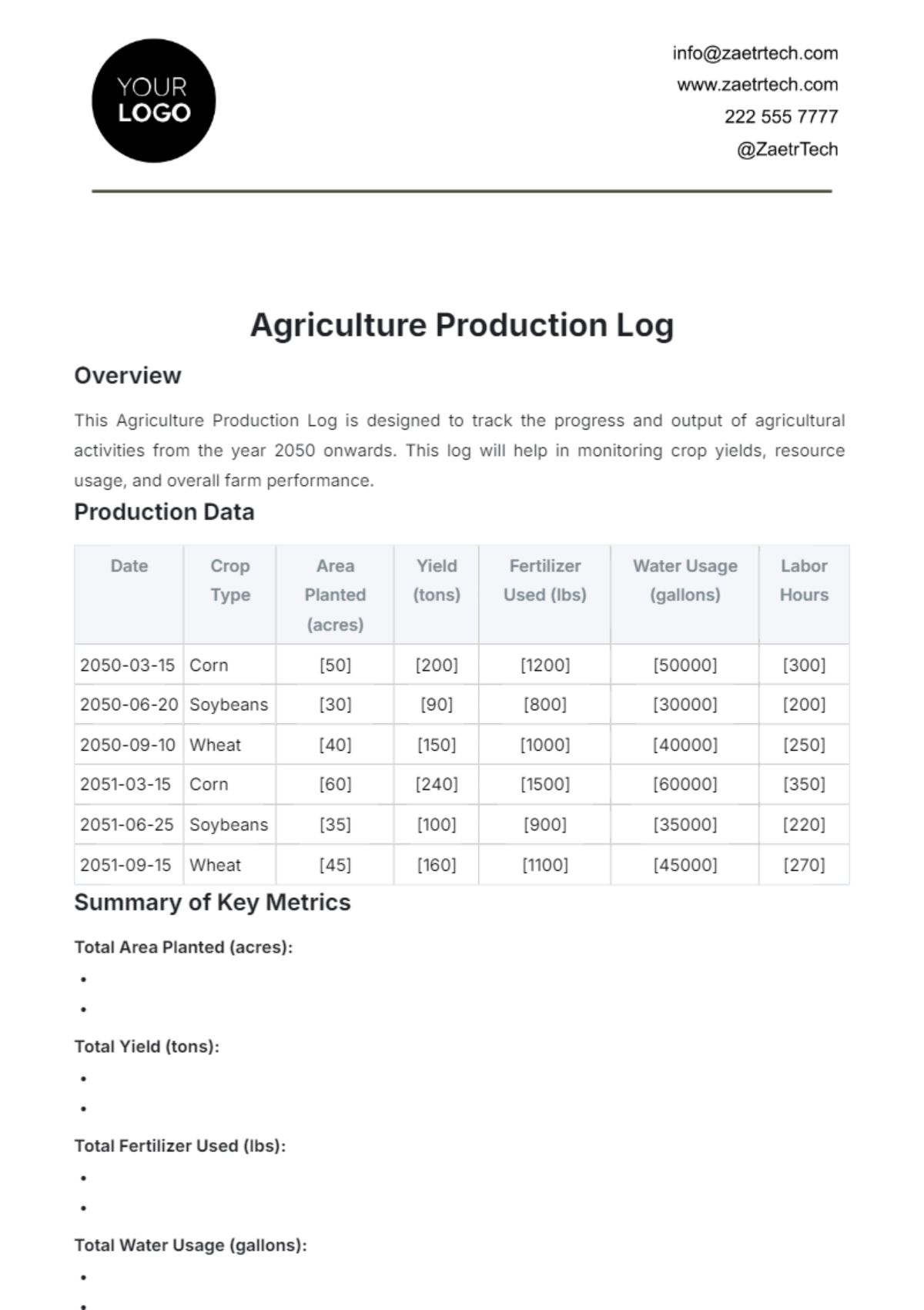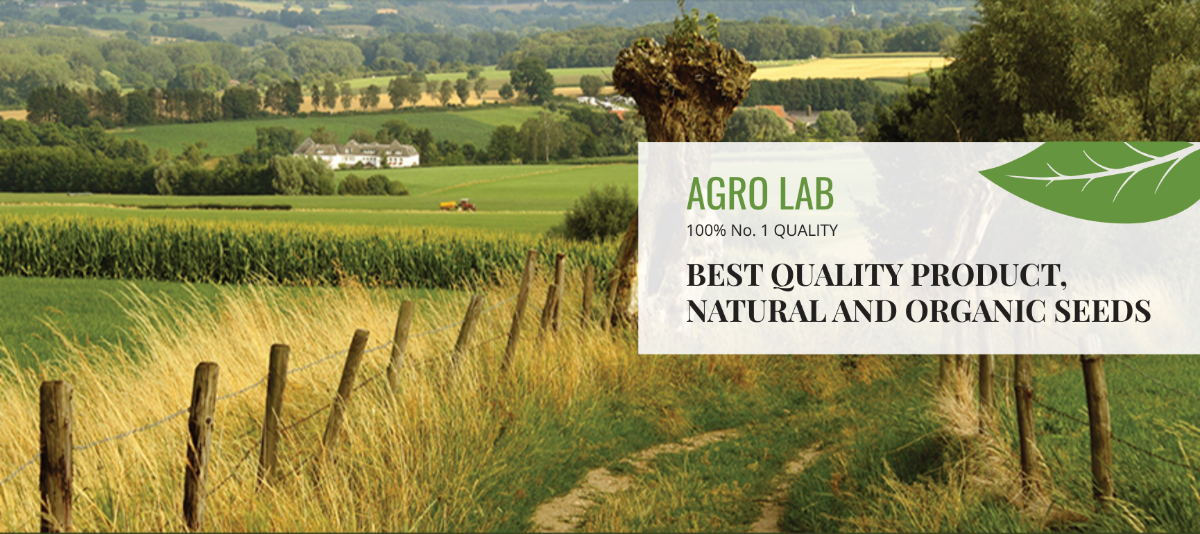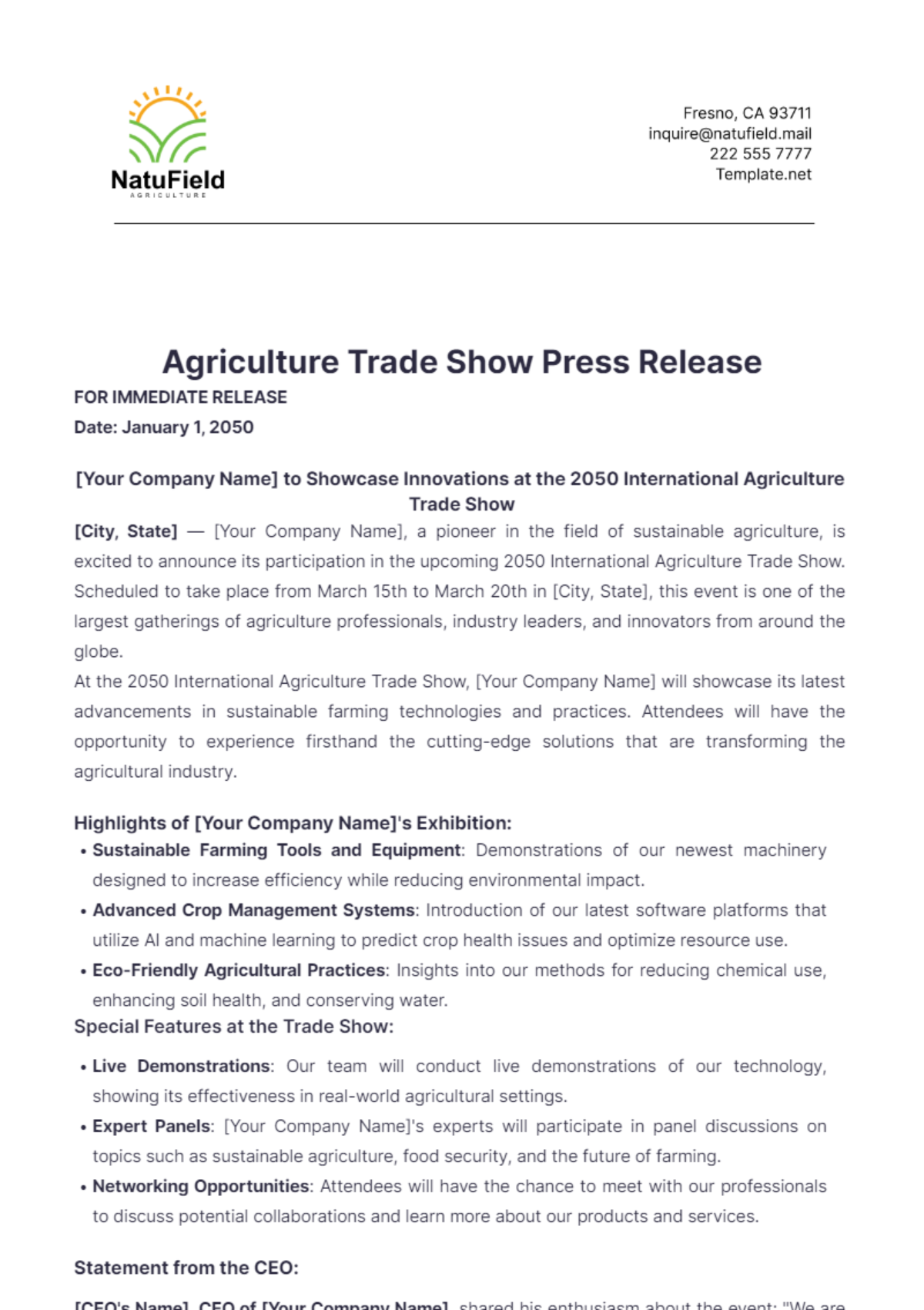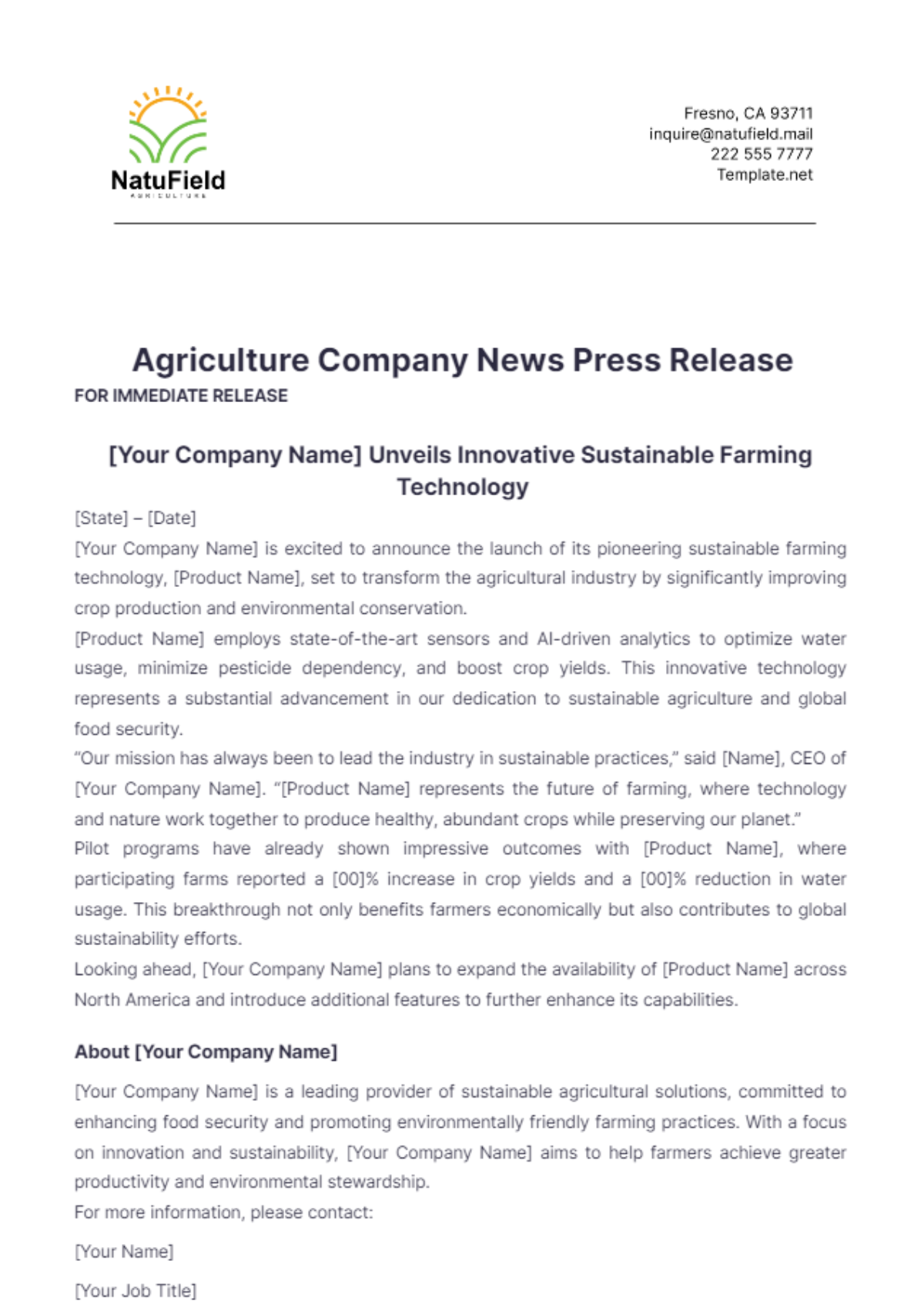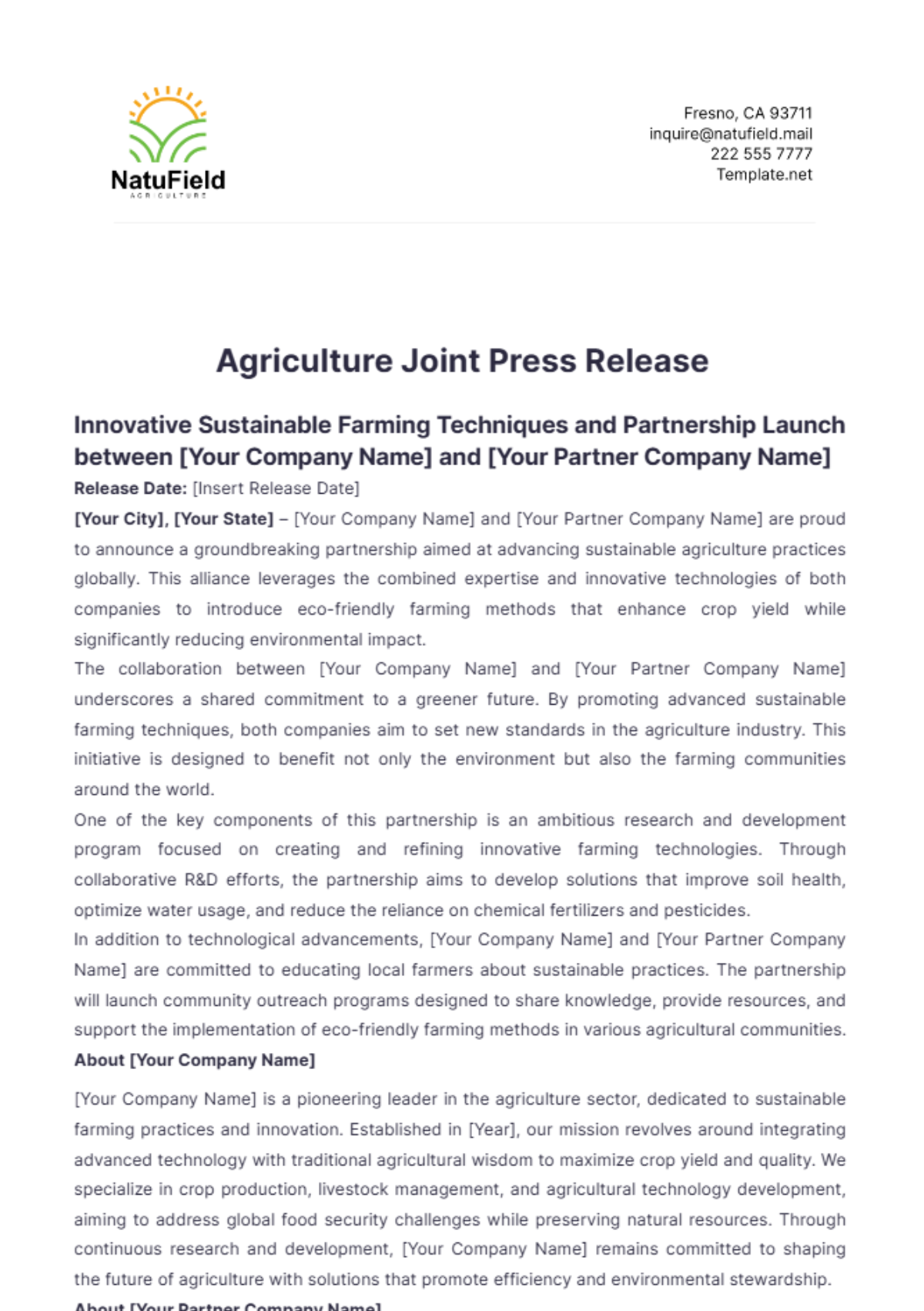Agriculture Worker User Guide
A. Overview
Agriculture has always been a vital sector, providing the essential resources needed for human survival and economic stability. At [Your Company Name], we recognize the indispensable contributions of agriculture workers in ensuring a consistent supply of high-quality food and materials. This user guide aims to offer comprehensive instructions, covering all aspects of agricultural work to support workers in their roles and enhance their efficiency, safety, and sustainability practices.
B. Purpose
The primary purpose of this guide is to provide agriculture workers with thorough instructions on various agricultural activities. By following these guidelines, workers can perform their tasks effectively and safely, ensuring the highest standards of productivity and quality. Additionally, this guide promotes sustainable practices to preserve the environment for future generations.
C. Scope
This guide encompasses a broad range of topics pertinent to agriculture workers, including safety guidelines, proper use of tools and equipment, crop management, animal husbandry, record keeping, environmental sustainability, and training and development. It serves as a valuable resource for all levels of agricultural workers, from novice field laborers to experienced livestock caretakers.
II. Safety Guidelines
A. General Safety Precautions
Awareness: Always stay alert and be mindful of your surroundings. Recognize potential hazards such as machinery, slippery surfaces, and adverse weather conditions. Regularly inspect the work area for any new risks that may have arisen.
Communication: Effective communication among team members is crucial for safety. Use clear signals, both verbal and non-verbal, to convey important information. Utilize two-way radios for long-distance communication and ensure all workers are familiar with emergency codes.
First Aid: Ensure that you know the locations of all first aid kits and emergency exits. Basic first aid knowledge, such as treating minor cuts and burns, is essential. Regularly attend refresher courses on first aid to keep your skills up to date.
B. Personal Protective Equipment (PPE)
Clothing: Wear appropriate work attire including long sleeves, long pants, and sturdy, closed-toe boots. This clothing helps protect against cuts, abrasions, and insect bites. Reflective vests should be worn when working near vehicles or in low-light conditions.
Gloves: Always wear gloves when handling tools, chemicals, or sharp objects. Different tasks require different types of gloves, such as leather gloves for heavy labor or nitrile gloves for handling chemicals.
Eye Protection: Safety goggles or glasses should be worn when operating machinery or handling substances that could splash. Prescription glasses should be fitted with safety lenses if necessary.
Hearing Protection: Use earplugs or earmuffs when working with loud machinery. Prolonged exposure to high noise levels can lead to permanent hearing damage.
C. Emergency Procedures
Fire Safety: In the event of a fire, immediately stop what you are doing and locate the nearest fire extinguisher. Follow evacuation procedures and move to the designated assembly point. Regular fire drills should be conducted to ensure everyone knows their roles.
Chemical Spills: For chemical spills, evacuate the area and inform your supervisor without delay. Follow the instructions on the Material Safety Data Sheet (MSDS) for the specific chemical involved. Use appropriate spill containment materials and protective gear during cleanup.
Medical Emergencies: For any medical emergency, call emergency services immediately. Administer basic first aid while waiting for professional help. Keep a list of emergency contacts and medical information for all workers readily accessible.
III. Tools and Equipment
A. Hand Tools
Shovels and Spades: Essential for digging, planting, and soil preparation. Ensure shovels and spades are kept clean and sharp to maximize efficiency. Store them in a dry place to prevent rust.
Pruners and Shears: Vital for trimming plants and maintaining healthy growth. Regular maintenance, including oiling and sharpening the blades, is necessary to ensure precise cuts.
Hoes: Used for weeding and soil aeration. Select the appropriate hoe for the task at hand to reduce physical strain and enhance effectiveness.
B. Power Tools
Trimmers and Edgers: Used for maintaining neat lawns and edges. Always check the blades for sharpness and ensure there is sufficient fuel before use. Follow the manufacturer's instructions for safe operation.
Chainsaws: For cutting large branches and trees. Safety protocols must be strictly followed, including wearing appropriate PPE. Regular maintenance, such as chain sharpening and oil level checks, is essential for safe operation.
Tillers: Utilized for soil preparation. Regular servicing, including oil changes and spark plug checks, is critical to maintain optimal performance. Always clean the tiller after use to prevent soil buildup.
C. Machinery
Tractors: Versatile machines used for plowing, planting, and hauling. Conduct thorough inspections before each use and follow a regular maintenance schedule as per the manufacturer’s guidelines. Proper training on tractor operation is mandatory.
Harvesters: Specialized equipment for harvesting crops. Ensure all moving parts are well-lubricated and clean to prevent contamination. Operators must be trained in the safe and efficient use of harvesters.
Irrigation Systems: Includes sprinklers, drip lines, and pivot systems. Regularly check for leaks and clogs to ensure efficient water distribution. Proper calibration and maintenance are necessary to optimize water use.
IV. Crop Management
A. Soil Preparation
Testing: Conduct soil tests to assess pH levels and nutrient content. Adjust the soil composition as needed by adding lime, fertilizers, or organic matter to achieve optimal growing conditions.
Tilling: Till the soil to break up clumps and improve aeration, which promotes healthy root growth. Over-tilling should be avoided as it can lead to soil compaction and degradation.
B. Planting Techniques
Seed Selection: Choose seeds that are well-suited to the local climate and soil conditions. Opt for disease-resistant varieties to minimize the need for chemical treatments.
Planting Depth and Spacing: Adhere to specific guidelines for each crop to ensure proper development. Incorrect planting depth or spacing can adversely affect seedling growth and crop yield.
Transplanting: Handle seedlings with care during transplanting to avoid root damage. Water the seedlings immediately after transplanting to help them establish in the new soil.
C. Irrigation Practices
Scheduling: Irrigate crops early in the morning or late in the afternoon to reduce water loss due to evaporation. Monitor soil moisture levels regularly to adjust watering schedules as needed.
Methods: Use efficient irrigation methods such as drip irrigation or soaker hoses to minimize water wastage. Overhead watering should be avoided to reduce the risk of fungal diseases.
D. Pest and Weed Control
Integrated Pest Management (IPM): Employ a combination of biological, cultural, and chemical methods to manage pests. Regularly monitor pest populations and take action only when necessary to minimize environmental impact.
Herbicides: Apply herbicides carefully to control weed growth. Follow the label instructions and safety precautions to avoid harming crops and the environment.
Mechanical Control: Use manual tools like hoes and cultivators to remove weeds. Mulching can also be an effective method to suppress weed growth and conserve soil moisture.
E. Harvesting Procedures
Timing: Harvest crops at their peak maturity to ensure the highest quality. Refer to specific guidelines for each crop to determine the optimal harvesting time.
Techniques: Use appropriate tools and methods to avoid damaging the crops. Handle the harvested produce gently to prevent bruising and spoilage.
Storage: Store harvested produce in a cool, dry place. Refrigerate perishable items to extend their shelf life and maintain quality.
V. Animal Husbandry
A. Livestock Care
Housing: Provide adequate shelter to protect animals from extreme weather conditions. Ensure that the housing is clean, well-ventilated, and spacious enough for the animals to move comfortably.
Daily Care: Regularly check animals for signs of illness or injury. Provide fresh water and high-quality feed daily, and maintain clean living areas to prevent disease.
B. Feeding Practices
Nutrition: Provide a balanced diet tailored to the nutritional needs of each species. Use high-quality feed and supplements as necessary to ensure optimal health and productivity.
Feeding Schedules: Establish and adhere to regular feeding schedules to meet the dietary needs of the animals. Adjust feeding amounts based on factors such as age, weight, and production status to maintain optimal health and growth.
C. Health Monitoring
Vaccinations: Follow a vaccination schedule recommended by veterinarians to prevent common diseases. Keep accurate records of vaccinations and treatments administered to each animal.
Disease Management: Monitor animals closely for signs of illness or injury. Isolate sick animals promptly to prevent the spread of disease to the rest of the herd or flock. Consult with a veterinarian for diagnosis and treatment options.
D. Breeding Programs
Selection: Choose breeding stock based on desirable traits such as health, productivity, and temperament. Maintain genetic diversity within the herd or flock to prevent inbreeding and promote overall herd health.
Management: Track breeding cycles carefully and manage mating to ensure successful pregnancies. Provide additional care and nutrition to pregnant and nursing animals to support healthy offspring.
VI. Record Keeping
A. Documentation Requirements
Daily Logs: Maintain detailed daily logs of farm activities, including feeding schedules, health checks, and maintenance tasks. Document observations and any actions taken to address issues promptly.
Financial Records: Keep comprehensive records of farm finances, including income and expenses related to crop production, livestock care, equipment purchases, and sales. Accurate financial records are essential for budgeting and decision-making.
B. Digital Tools and Software
Farm Management Software: Utilize specialized software to streamline record keeping and farm management tasks. Farm management software allows for efficient data entry, analysis of trends, and planning for future operations.
Mobile Apps: Use mobile applications designed for agriculture to record data in real-time from the field. Mobile apps offer convenience and accessibility, enabling workers to update records and monitor operations remotely.
C. Reporting and Compliance
Regulatory Compliance: Ensure all farm activities comply with local, state, and federal regulations governing agriculture. This includes environmental regulations, labor laws, animal welfare standards, and food safety requirements.
Reporting: Submit required reports to regulatory agencies on time and accurately. Maintain records of pesticide applications, animal health treatments, and other activities as mandated by regulatory bodies.
VII. Environmental Sustainability
A. Sustainable Farming Practices
Crop Rotation: Practice crop rotation to improve soil health, reduce pest pressure, and enhance nutrient availability. Rotate crops with different nutrient requirements and growth patterns to maintain soil fertility.
Cover Cropping: Plant cover crops during off-seasons to prevent soil erosion, suppress weeds, and improve soil structure. Cover crops also add organic matter to the soil, enhancing its overall health and productivity.
B. Waste Management
Composting: Convert organic waste, such as crop residues and animal manure, into compost for use as a natural fertilizer. Properly managed composting reduces waste volume, improves soil fertility, and minimizes environmental impact.
Recycling: Recycle materials used on the farm, such as plastic containers, metal equipment, and paper products. Participate in recycling programs and use recycled materials whenever possible to reduce waste and conserve resources.
C. Water Conservation
Efficient Irrigation: Implement water-efficient irrigation systems, such as drip irrigation and soil moisture sensors, to minimize water use. Schedule irrigation during times of low evaporation to maximize water absorption by crops and reduce runoff.
Rainwater Harvesting: Collect rainwater from roofs and other surfaces for use in irrigation and animal watering. Rainwater harvesting reduces reliance on groundwater and municipal water supplies, conserving valuable resources and reducing costs.
VIII. Training and Development
A. Onboarding New Workers
Orientation: Provide comprehensive onboarding for new workers, introducing them to farm operations, safety procedures, and team dynamics. Orientations should cover emergency protocols, PPE usage, and workplace expectations.
Hands-On Training: Offer practical, hands-on training to familiarize new workers with tools, equipment, and daily tasks. Pair new workers with experienced team members for mentorship and guidance.
B. Continuous Education
Workshops and Seminars: Encourage ongoing professional development through workshops and seminars on topics such as crop management techniques, animal health practices, and regulatory updates. Attendance at industry conferences can broaden knowledge and foster networking opportunities.
Online Courses: Provide access to online courses and educational resources that allow workers to expand their skills and knowledge remotely. Online platforms offer flexibility, enabling workers to learn at their own pace and apply new insights directly to their work.
C. Certifications and Workshops
Certifications: Support workers in obtaining industry certifications relevant to their roles, such as Certified Crop Advisor (CCA) or Certified Pesticide Applicator. Certifications validate skills and knowledge, enhancing worker credibility and compliance with regulatory requirements.
Workshops: Host workshops within the farm or collaborate with agricultural organizations to conduct training sessions on specialized topics. Workshops provide opportunities for hands-on learning and foster continuous improvement in farm practices.
